PinotFile: 9.26 June 23, 2013
|
Woodenhead: Real Wines Made with Dinosaur MethodologyMy reverence for the wines of Burt Williams and Ed Selyem have led me to pursue many spinoffs started by those who worked at the original Williams Selyem winery, including Brogan Cellars, Cobb Wines, Papapietro Perry and WesMar, all of which have achieved distinction on their own with Pinot Noir. Woodenhead’s Nikolai Stez owes his inspiration to Williams Selyem as well, having worked seventeen harvests as an assistant winemaker to Burt Williams and learned from the master. Stez grew up in the Russian River Valley and was drawn to wine at an early age. He began making wine while still in college and obtained formal winemaking education through the Horticulture and Viticulture program at Santa Rosa Junior College and classes at University of California Davis extension. With the sale of Williams Selyem Winery in 1997, Stez moved on and started his own label, Woodenhead. The name, “Woodenhead,” was given to him by an old girlfriend who thought that he was very stubborn (which he is). His current domestic partner, Zina Bower, handles the marketing and business side of Woodenhead while working as business manager at Diamond Creek Vineyards in Napa Valley. The photo below shows Zina and Nikolai at the Pigs & Pinot event in Healdsburg at which their wine, the 2007 Woodenhead Buena Tierra Vineyard Original Planting Russian River Valley Pinot Noir, won the Pinot Cup over fifty other entrants.
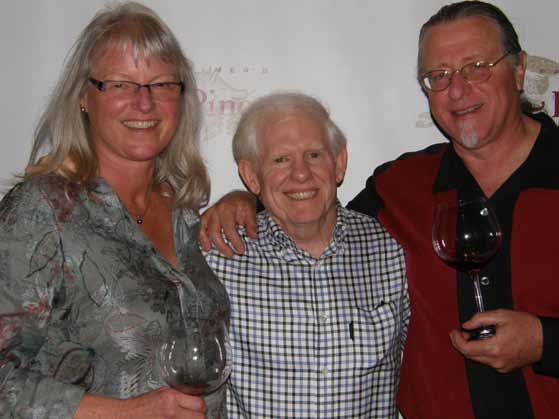 Woodenhead Pinot Noir is “Burgundian done in the California style.” Winemaking is by gravity flow, hand punch downs are employed, a gentle basket press is used, and aging is extended in French oak barrels. Stez uses the fermenting containers crafted from stainless steel milk tanks like those originally employed at Williams Selyem. These bins have the perfect configuration for fermenting Pinot Noir. The photo below shows several of the fermenting bins on a pad at the Woodenhead winery.
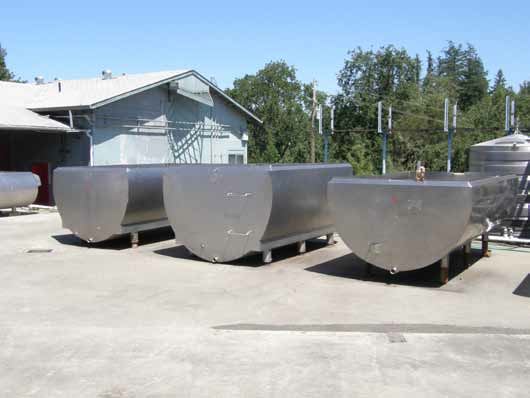 Stez employs inoculated yeast (Williams Selyem) and malolactic cultures, uses no enzymes, occasional acid adjustments, and very low sulfur levels. The Pinot Noirs are typically aged for 18 months and an additional 6 months in bottle before release. This explains why the wines reviewed below are from the 2009 and 2010 vintages. All wines are unfined and unfiltered. Through his many years in the Russian River Valley, Stez has acquired a number of winegrower contacts and has been able to source fruit from some outstanding vineyards. When one looks back on the success of Williams Selyem, one key factor that stands out was the quality of vineyards from which the wines were made. You simply cannot make great wine unless you have exceptional grapes. The Woodenhead Pinot Noirs are proof of that tenant. One of Stez’s notable Russian River Valley vineyard sources is Buena Tierra Vineyard Original Plantings from which the the last vintage, 2010, will be released in the fall of 2013. The vineyard was originally planted in 1978 by Henry Trione and the grapes were initially sold to Korbel. Trione does not know what clone was planted, but the vines are upright growing, pinot droit in type. Currently owned and farmed by Joseph R, Miller, this vineyard is located 1.5 miles southeast of Rochioli Vineyard in the low hills of the Laguna Ridge where the Russian River turns to head west to the Pacific Ocean. The well-drained sandy clay loam soil, cooling morning and evening fog, and bright sunshine during the day is ideal for Pinot Noir and Chardonnay. The old diseased original vines were pulled out after the 2010 vintage and replaced with Dijon clone 943 to supplement the 115, 667 and Pommard clones that are also planted there. Stez also sources Pinot Noir from Ritchie Vineyard, specifically 9 rows of Pommard clone planted 30 to 35 years ago known as the Cinder Cone Block adjacent the oldest and most famous Chardonnay vines in this venerable vineyard. Other vineyard sources have included Wiley Vineyard and Morning Dew Ranch in Anderson Valley, and Fruitland Ranch in Humboldt County. The 2009 Woodenhead Buena Tierra Vineyard Original Planting won Best of Class at this year’s Sonoma County Harvest Fair and the 2010 Woodenhead “Wet Kiss” Russian River Valley Pinot Noir won Double Gold in the 2013 San Francisco Chronicle Wine Competition. The Woodenhead tasting room, previously voted Best in Sonoma County by readers of the Bohemian newspaper, is located at 5700 River Road in Santa Rosa. It is open Thursday through Monday from 10:30 to 4:30. The winery, located at the end of a winding road high above Westside Road, is not open to the public because of local laws. This is unfortunate, because it is a treasure trove of Williams Selyem memorabilia. Pictured below are a bottle of 1982 Pinot Noir sporting the original name of the Williams Selyem winery, Hacienda Del Rio, and photos of bottles of Hacienda Del Rio Pinot Noir and Zinfandel as well as an extensive collection of Williams Selyem wines adjacent Woodenhead library wines.
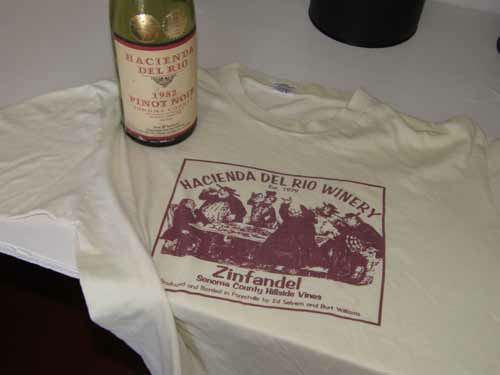
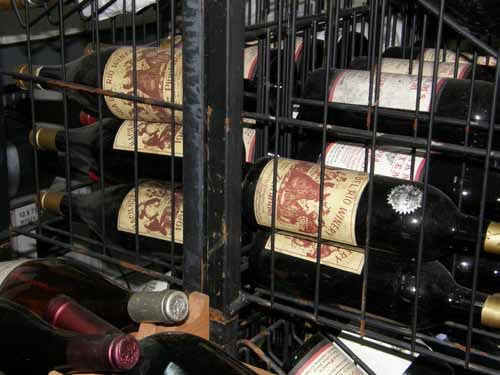
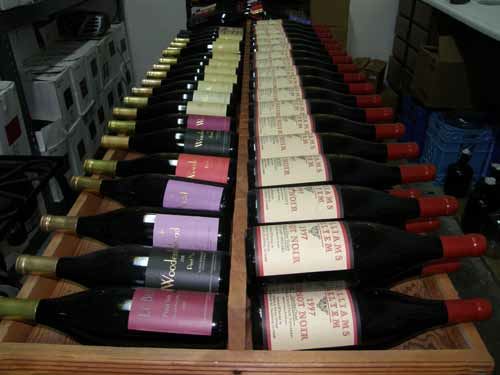 Woodenhead wines are sold through the website store at www.woodenheadwine.com. In addition to Pinot Noir, there are several Zinfandels offered as well as magnums of Zinfandel and Pinot Noir. A delightful refreshing white wine, a 2011 Russian River Valley French Colombard, is very unique and highly recommended at $20 (286 cases). Finally, a 2009 Méthode Champenoise Sparkling Wine from the Russian River Valley, also composed of French Colombard grapes, is a superb example of the genre ($46, 212 cases). Wine club members receive a 15% discount and ‘Just In Case’ Club members get a 20% discount on wine purchases. To read Stez’s full disclosure on his winemaking philosophy and his so-called “dinosaur methodology,” visit www.woodenheadwine.com/nicks-notes/.
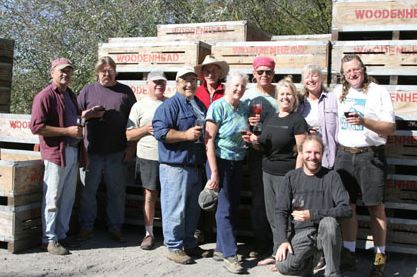
2010 Woodenhead Russian River Valley Pinot Noir 13.5% alc., 872 cases, $42. Sourced from three vineyards including Buena Tierra and Ritchie. Five clones. Woodenhead’s go-to-wine for everyday drinking. · This wine is true to its Russian River Valley heritage with aromas and flavors of cherries, baking spices and cola. Soft and easy to drink with supple tannins, this wine works beautifully at the nightly dinner table. Good.
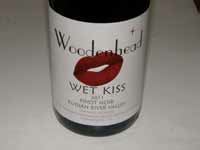 2010 Woodenhead Wet Kiss Russian River Valley Pinot Noir 13.7% alc., 397 cases, $52. First release of this wine comprised of 25% Ritchie Vineyard Martini clone (35 years old), 37.5% Cameron Vineyard Martini clone (30+ years old) and River South Vineyard Swan clone (3 years old). Retailers have avoided this wine because of its name which they consider lacks seriousness but this is a serious wine. It is very popular in the winery tasting room. · Medium reddishpurple color in the glass. Very aromatic featuring hi-tone scents of Bing cherries, baking spice and a hint of vanilla. Moderately light in weight but flavorful offering nicely composed notes of juicy dark cherries and berries with a subtle riff of oakdriven roasted nuts and vanilla, and a finishing thrust of lush cherry reduction sauce. Forward, soft and easy to cozy up to, with bright acidity adding to its refreshing appeal, this wine will have crowd appeal. Good (+).
2010 Woodenhead Ritchie Vineyard Cinder Cone Russian River Valley Pinot Noir 14.0% alc., 124 cases, $65. 30 to 35-year-old Pommard and Martini vines. · Medium reddish-purple hue in the glass. Aromas of cherry liquor, sassafras, spice and a touch of oak. On lighter side, but with impressive flavor and finishing intensity, offering tastes of black cherries, black raspberries and subtle oak. The sappy fruit core hits all the high notes while the balanced tannins keep the fruit in line. I sense this wine will become even more complex with more time in the bottle. Very good.
2010 Woodenhead Mendocino Ridge Pinot Noir 148 cases, $38. Sourced from the Valenti Vineyard. 60% of bud stock came from Morning Dew Ranch including a Rochioli selection with the remaining 40% clone 115. First crop from vines budded over to Pinot Noir from Zinfandel. · Moderately light reddish-purple color in the glass. Unfolds slowly in the glass, offering fragrant notes of dark cherries and berries with a hint of oak and dried rose petals. On the lighter side, but very tasty and highly approachable, with flavors that echo the nose, finishing with a flourish of black raspberry aromatics. The tannins are dry and fine-grain, the acidity brings the fruit to life and the whole package is very smooth and dreamy on the palate. Very good (+).
2010 Woodenhead Santa Cruz Mountains Pinot Noir 14.8% alc., $38. Sourced from David Bruce’s Kent Berry Vineyard. · Moderately dark reddish-purple color in the glass. Very shy upon opening, slowly revealing itself with a slightly roasted fruit profile and notes of earth, briar and old book. Juicy, rustic and rugged with concentrated flavors of blueberry, black plum and dark cherry with lacy oak in the background. Plenty of finishing tannin and a little heat shows up on the finish. Should benefit from more time in bottle. Good.
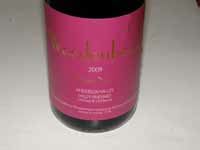 2009 Woodenhead Wiley Vineyard Anderson Valley Pinot Noir 14.3% alc., 296 cases, $60. Primarily Pommard clone with a little Mt. Eden selection. · Medium reddish-purple color in the glass. This wine is in a class by itself. The knockout nose is alive with flavors of fresh, perfectly ripe berries. Earthy and serious, with discreetly concentrated flavors of dark red and black berries that have a delicious sappiness that really sings. Beautifully balanced with well-honed tannins and a very long and generous finish. Many call this vineyard a California Grand Cru and that title is well earned.
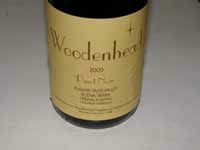 2009 Woodenhead Buena Tierra Original Planting Russian River Valley Pinot Noir 173 cases, sold out (look for retail availability). · Moderately light reddish-purple color in the glass. Charming in every way with alluring aromas of cherries, fresh berry jam and rose petals. Boldly flavored with black cherries and a hint of spice with complimentary cedar-toned oak treatment. The intense mid palate attack and brilliant finish reflect a wine of pedigree. The impeccable balance indicates accomplished winemaking. There is nothing quite like this wine.
2007 Woodenhead Troika North Coast Pinot Noir 14.4% alc., 75 cases, $70. Three of best barrels, one each from Buena Tierra, Wiley and Fruitland vineyards. 100% new French oak barrels. The last version of this wine as two of the vineyard sources are no longer available. Tasted briefly at the winery. · Ripe black fruit profile including blackberry and black currant flavors backed by healthy tannins and underlain with noticeable oak. The fruit core is concentrated and sappy. Decant if you must open now, but this wine will benefit from even more time in bottle. Good.
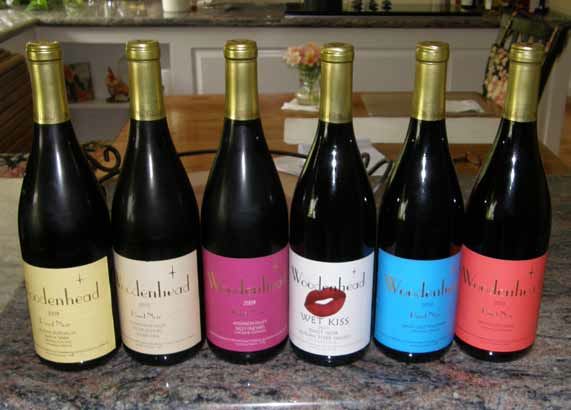
Sojourn Cellars
Plato Proprietors Craig and Ellen Haserot and proprietor and winemaker Erich Bradley produce small lots of handcrafted artisanal wines from exceptional vineyards throughout Sonoma and Napa counties. The pair met on the tennis courts of Sonoma and formed Sojourn Cellars in 2001, releasing their first Pinot Noir in 2004. The brand has been highly successful, earning considerable praise from the wine press (see “Sojourn Cellars: Pull Up a Lawn Chair,” in the PinotFile, Volume 8, Issue 14, 2010). Today, they produce Pinot Noir, Chardonnay and Cabernet Sauvignon wines that are largely sold on allocation to mailing list members and a select group of restaurants and retailers. Haserot is the exuberant one, the “face” of the winery, heading up sales and marketing (pictured below). Bradley, more reserved but with a charming smile, studied winemaking at University of California at Davis and Santa Rosa Junior College and was mentored by winemaker Dick Arrowood. He is also the owner and winemaker of Audelssa Estate Winery in Glen Ellen, a small producer of Bordeaux and Rhone inspired wines, where he has received well-deserved praise from Robert Parker (“Everything I have tasted has been enormously impressive”). The Sojourn wines are also crafted at Audellssa.
 Winemaking is minimalistic using whole berry native fermentations in small open-top fermenters, with hand punch downs, basket pressing, and no pumping. The Pinot Noirs are unfined and unfiltered. Personal tastings are available by appointment daily in downtown Sonoma at the Sojourn Cellars Tasting Salon. Visit the website for further information and to sign up for the mailing list: www.sojourncellars.com. 2011 was a very challenging vintage for vintners and I know in talking to many of them that they struggled to craft wines that were up to their usual standards. That makes all the following 2011 Sojourn Pinot Noirs all the more impressive, for the lineup is exceedingly impressive across every bottling. The wines are relatively light in weight, very approachable, with soft tannins and are surprisingly good. I have found few other wineries in California that have been able to equal the quality of the 2011 vintage wines reviewed here. My hat goes off to Erich and Craig. I wouldn’t want to play these guys in tennis, because they are a talented and determined pair.
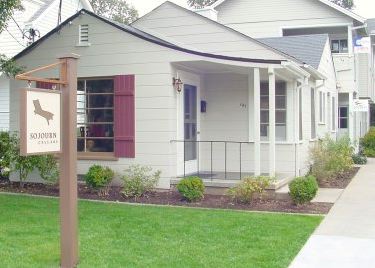
2011 Sojourn Cellars Rodgers Creek Vineyard Sonoma Coast Pinot Noir 14.2% alc., pH 3.68, TA 0.60, 550 cases, $48. Released Spring 2013. Vineyard is high on a ridge in the heart of the Petaluma Gap. The vines receive the full brunt of wind and fog that define this cool climate site. The light chalky volcanic ash soils on steep inclines typically lead to vine stress and high levels of concentration. Pommard and 777 clones. 15% whole cluster (Pommard), aged in 50% new French oak barrels. · Moderate reddish-purple color in the glass. Aromas of dark red berries, black cherries, briar and a hint of spearmint. Light, even a bit thin, with tangy flavors of red cherries, red raspberries and cola, supple tannins, and a good cut of acidity on the mildly shallow finish. Very giving and easy to drink. Good (+).
2011 Sojourn Cellars Gap’s Crown Vineyard Sonoma Coast Pinot Noir 14.6% alc., pH 3.59, TA 0.58, 800 cases, $54. Released Spring 2013. This hillside vineyard is located on Roberts Road just above Sangiacomo Vineyard. Clones are 828, 115 and 667. 10% whole cluster, aged in 50% new French oak barrels. · Medium reddish-purple color in the glass. Shy but pleasing aromas of dark red cherries, raspberry jam, peat and wood shed. A pretty wine with impressive roundness and polish, offering flavors of cherry pie glaze and mixed berries, with oak-driven spicy layers in the background, and noticeable richness on the mid palate. Very good.
2011 Sojourn Cellars Silver Eagle Vineyard Sonoma Coast Pinot Noir 14.2% alc., pH 3.68, TA 0.56, 175 cases, $59. Release fall 2013. Inaugural vintage for this 30-acre vineyard farmed by Ulises Valdez that is located in the Green Valley AVA north of Occidental and at the western edge of the Sonoma Coast. Pommard clone, and Calera and Vosne-Romanee selections were sourced from a low-vigor section of the vineyard. Aged in 50% new French oak barrels. · Moderately light reddish-purple color in the glass. Frgrant with aromas of red fruit, particularly cherry, and sandalwood. An elegant wine that is light on its feet with tasty flavors of cherries, raspberries and cranberries accented with baking spice and oak. Forward, easy to drink, with plenty of pinotosity, but not enough fruit singing. A little better when tasted later in the day from a previously opened and re-corked bottle. Good (+).
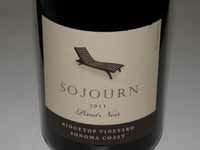 2011 Sojourn Cellars Ridgetop Vineyard Sonoma Coast Pinot Noir 14.4% alc., pH 3.75, TA 0.55, 275 cases, $59. Release fall 2013. This vineyard is owned and managed by Thomas Rivers Brown and Fred Schrader and farmed by Ulises Valdez. Located in the remote coastal mountains near Annapolis, it is surrounded by redwoods at 1100 feet above the Pacific Ocean. Yields are minuscule with concentrated flavors. Clones 115, 667 and 777. Aged in 50% new French oak barrels. · Medium reddish-purple hue in the glass. The perfume draws you into the glass with aromas of darker plum and berry with notes of balsam and salt air. Delicious middleweight core of vibrant plum, black cherry, berry and cola flavors clothed in soft, lacy tannins, finishing with a lingering memory of cherry liquor. Very smooth in the mouth and discreetly sappy, this wine displays impeccable balance. Memorable.
2011 Sojourn Cellars Campbell Ranch Sonoma Coast Pinot Noir 13.8% alc., pH 3.69, TA 0.58, 175 cases, $59. Release fall 2013. Ulises Valdez has taken over vineyard management of the property. Located in the remote coastal mountains near Annapolis, it is surrounded by redwoods at about 750 foot elevation. Clones 115 and 777. Aged in 50% new French oak barrels. · Moderately dark reddish-purple color in the glass. Bright aromas of dark red cherries and berries as well as wooded forest. Very tasty and harmonious, with ripely flavored blueberries, raspberries and cherries. Smoothly textured with soft, dry tannins and a generous finish. Nothing out of place. Still pumping out the flavors nicely the following day from a previously opened and recorked bottle. Very good.
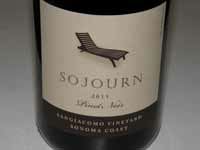 2011 Sojourn Cellars Sangiacomo Vineyard Sonoma Coast Pinot Noir 14.5% alc., pH 3.66, TA 0.57, 975 cases, $48. Released February 2012. This vineyard is located at the western base of Sonoma Mountain in the Petaluma Gap. Clones 115, 777 and small portions of Swan and Pommard. Aged in 50% new French oak barrels. · Vibrant aromas of fresh cherry pie glaze and baking spice with oak in the background. Juicy and light on its feet, with flavors that echo the nose.Very smooth and comforting, slipping off the palate at the end leaving an impression of perfectly ripe black cherry fruit. A rather feminine wine that packs a wallop of flavor. Still satisfying the following day from a previously opened and re-corked bottle.
Hirsch Vineyards: Redemption after a Nightmarish VintageI last wrote about the seismic Pinots from Hirsch Vineyards in February 2012 when I reviewed the marvelous 2009 vintage wines. The 2010 vintage was an unprecedented challenge. David Hirsch notes on his website,”2010 was a creature unto itself, not comparable to other years in our experience.” The winter was rainy with moderate temperatures, beginning with heavy rains and winds from January 17 to 23. Total rainfall for the year was over 100 inches. This sounds like a lot, but heavy rainfall is customary for this outpost in Cazadero in the Fort Ross-Seaview AVA on the far west Sonoma Coast. What distinguished 2010 were the long periods of cool weather during the spring and summer, with overcast skies, fog and biting winds. The result was an uneven crop set and extensive millerandage (“hens and chicks”) making farming for balance a challenge. Two inches of rain preceded harvest. The pick began September 21, with sugars at 21.5º Brix and lower. After the first five days of harvest, the weather shot up into the 90 degree range and the remaining fruit became ripe all at once requiring a rush to pick the remaining 82 tons of fruit. The heat spike was followed by cooling and the balance of the harvest dragged on until October 12 when the last of the Chardonnay was picked. Hirsch described the final pick: “Tiny to large berries, green to plum colored skins, bunches with four berries to fruits with 400, tiny and tight packed bunches and large, gangly open bunches. You name it, 2010 produced it.” Surprisingly, the wines turned out to have balance, depth and expression of site with plenty of credit going to winemaker Ross Cobb and his crew. Most likely the maturity, soils, and topography were able to handle mother nature. I believe you will find plenty to like in the 2010 vintage wines reviewed below. 2011 turned out to be a much more welcome vintage with moderate weather throughout the growing season and verasion and Hirsch believes it produced some of the finest wines from this site to date. Hirsch Vineyards wines are sold primarily through a mailing list and direct purchase on the website at www.hirschvineyards.com. Because of limited production in 2010, the special bottlings are allocated to mailing list members. The entry-level wine, “The Bohan-Dillon,” and occasionally other releases, are available through retail distribution. East Ridge section of Hirsch Vineyards is shown in the photos below.
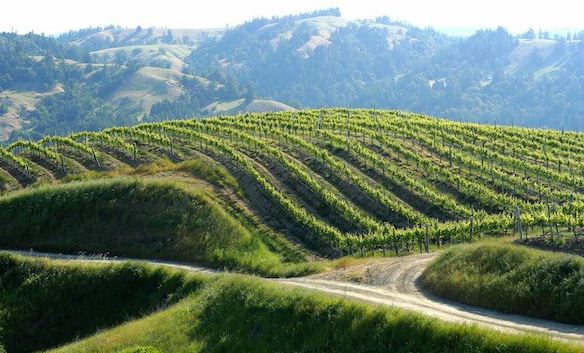 Visitors (up to six) are welcome by advance appointment for private tours with priority given to active members of the Hirsch mailing list. The vineyards are quite remote, about two to three hours from San Francisco and ninety minutes from Santa Rosa and Healdsburg. Private tastings are occasionally held in the Healdsburg area.
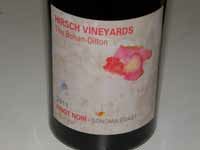 2011 Hirsch Vineyards The Bohan-Dillon Sonoma Coast Pinot Noir 13.2% alc., pH 3.48, 1,012, cases, $34. About one-third Hirsch fruit, with the balance from neighbors including Hellenthal, McDougall and Nobles vineyards. · Moderate reddish-purple color in the glass. Highly scented with aromas of black cherries, Hoison sauce, spicy oak and rosebud. A lighter but tasty wine with straight forward flavors of black cherries and blue and black berries complimented by cedary oak. The tannins are nicely balanced, the wine is silky on the palate, and the cherry really sings on the finish. Good.
2011 Hirsch Vineyards Estate Sonoma Coast Chardonnay 13.5% alc., pH 3.35, 506 cases, $55. · Golden straw color and clear in the glass. Very appealing aromas of crème brûlée, white peach, lemon drop and brioche. Very clean and polished, with flavors of white stone fruits, apple and citrus, sporting a pleasing touch of oak, and showing some aromatic intensity on the somewhat lengthy finish. Very good.
2010 Hirsch Vineyards San Andreas Fault Estate Sonoma Coast Pinot Noir 13.0% alc., $60. Release fall 2013. · Moderately light reddish-purple color in the glass. Oak-dominated nose of coffee and dark caramel scents. Elegant, with light weight cherry and cranberry flavors backed by toasty oak and noticeable tannins. The delicate fruit is buried in oak at present but this should resolve to some degree with more time in bottle. Good (+).
2010 Hirsch Vineyards West Ridge Estate Sonoma Coast Pinot Noir 12.8% alc., 165 cases, $N/A. Release fall 2013. From a series of hilltop blocks covering 28 acres. A selection of the most exceptional barrels from three of the very best blocks on West Ridge planted to Mt. Eden, Swan and Pommard clones. · Medium reddish-purple color in the glass. The nose is shy, offering scents of red cherries and berries with a hint of toasty oak. This wine has a spring in its step due to vibrant acidity. While the East Ridge shows off darker fruits, the West Ridge features redder fruits and less tannin. It is a more giving and vibrant wine now than the East Ridge. Very good.
2010 Hirsch Vineyards East Ridge Estate Sonoma Coast Pinot Noir 13.0% alc., 240 cases, $N/A. Release fall 2013. From an 18-acre unique microclimate planted to Mt. Eden, Swan and Pommard clones. A selection of the best barrels from the three oldest blocks on the East Ridge. · Medium reddish-purple color in the glass. Exotic aromas of wild berries, wooded forest and a hint of oak. Delicious core of sappy, dark red berry and black cherry fruit. Elegant, polished and smoothly textured, sporting some prominent tannins and oak that will integrate over time. Definitely lighter and less concentrated in this vintage, but a thoroughly pleasing wine. Very good.
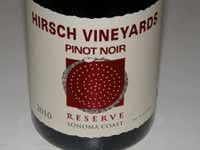 2010 Hirsch Vineyards Reserve Estate Pinot Noir 13.1% alc., 295 cases, $N/A. Release spring 2014. A selection of the best barrels from eleven of the oldest and finest vineyard blocks at Hirsch. · Moderate reddish-purple color in the glass. A great expression of Pinot Noir with marvelous aromas of black cherries, molasses, spice and oak. Mid weight flavors of black cherries, black raspberries and Dr. Pepper that are the most generous and concentrated of all the Hirsch wines in this vintage. Silky on entry, with striking Pinot sweetness on the mid palate, showing a firm, balanced tannic backbone, and finishing with a flourish of spicy black cherry fruit. Will benefit from more bottle age. A wine truly deserving of the reserve designation.
Merry Edwards: “Queen of Pinot”Merry (Meredith) Edwards has been in the news of late. She was inducted into the 2013 Vintners Hall of Fame along with fellow inductees Robert Parker, Jr., the late Cesar Chevaz, and the late author Frank Schoonmaker. Only two other women have been inducted into the Vintners Hall of Fame, American grape geneticist Carole Meredith and winemaker Zelma Long.
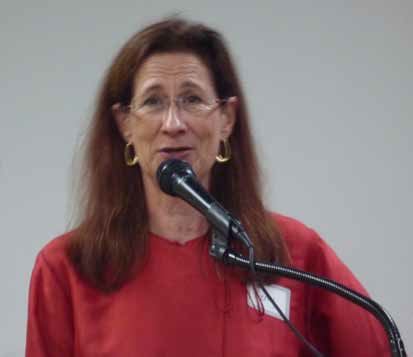 Edwards’ contributions have included important clonal selection research including the origination of the Mount Eden Clone (UCD 37) of Pinot Noir. Her other research led to the abolishment of lead capsules on wine bottles. She has been a champion of women winemakers and a spokesperson against discrimination in the winemaking field. Finally, she has been a prominent promoter of Sonoma County and its wines, and in particular, the Pinot Noirs of the Russian River Valley. Edwards obtained a master’s degree in food science and enology at University of California at Davis and has been crafting Pinot Noir in California since the early 1970s when she had her start at Mount Eden in the Santa Cruz Mountains, replacing Peter Graff at the fledgling winery. Her work at Mount Eden was remarkable for the time since there were very few winemaking jobs offered to women. She made some notable sparkling wine at Mount Eden, but her true passion was Pinot Noir, and her legacy will say that she was the first woman to make credible Pinot Noir in California at a time when Joe Swan, Davis Bynum, Tom Dehlinger, and Marimar Torres were starting their own Pinot Noir programs. Edwards left Mount Eden in 1977 and went on to national prominence at Matanzas Creek. Her initial private label, Merry Vintners, failed, and along the way she consulted for numerous wineries including Domaine Laurier, Liparita, Fritz, Lambert Bridge and Pellegrini Family Vineyards. Through the many years of struggle, she reached the most exciting chapter in her professional career beginning in 1996, when she bought a 24-acre fruit orchard southwest of Sebastopol and formed a partnership with her husband, Ken Coopersmith, and others, under the Meredith Vineyard Estate name. This enabled her to produce Merry Edwards wines from select Pinot Noir grapes in the Russian River Valley and Sonoma Coast, including, for the first time, her own vineyards, Meredith Estate, Coopersmith, Georganne and Cresta d’Oro. After years of working as a guest at other wineries, the Merry Edwards Winery, located at the Coopersmith Vineyard, opened in time for the 2007 harvest. Edwards is one of the few vintners who produce both Pinot Noir and Sauvignon Blanc, and ironically, her Sauvignon Blanc, at least in my opinion, is her best wine. She produces an extensive line of appellation and vineyard-designated Pinot Noirs that are in great demand from both consumers and restauranteurs. In a recent issue of Wines & Spirits (March 26, 2013), featuring the “24th Annual Restaurant Wine Poll,” Merry Edwards was the 8th most popular restaurant wine list brand in 2012. Merry Edwards’ Pinot Noits are very Caliesque in style, deeply colored, featuring rich, very ripe, fully extracted fruit flavors. All wines carry the designation, “MÉTHODE Â L’ANCIENNE,” referring to the handwork and timehonored Burgundian techniques that Edwards uses. Merry Edwards wines are sold through a mailing list, online via the website at www.merryedwards.com, and through retail distribution. Tasting is available by appointment at the winery located at 2959 Gravenstein Highway North in Sebastopol.
2005 Merry Edwards Olivet Lane Russian River Valley Pinot Noir 14.3% alc.. Vineyard was one of the first Pinot Noir estates in the Russian River Valley, planted in 1973 to the Martini clone. · Moderately light reddishpurple color in the glass. Fragrant with aromas of Bing cherries, sandalwood, leather and hazelnuts. The wine sports a middleweight cherry core with an echo of toasted oak. The tannins have fully softened and the finish is replete with cherries. The wine has aged nicely, but has peaked, so drink up. Very good.
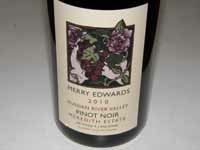 2010 Merry Edwards Meredith Estate Russian River Valley Pinot Noir 14.2% alc., $57. · Dark reddish-purple color in the glass. Very ripe fruit profile on the nose offering aromas of blackberries, black raspberries, Asian 5-spice and subtle oak. Rich, ripe and full-flavored with oodles of sappy black fruits. The decadent fruit core is supported by balanced tannins and finishes with uncommon intensity and length. Not my preferred style, but this wine will find many fans relishing its mouth-coating explosion of fruit. Very good.
2010 Merry Edwards Flax Vineyard Russian River Valley Pinot Noir 14.1% alc., 430 cases, $54. Pommard clone. · Dark reddish-purple color in the glass. Nicely scented with aromas of fresh Bing cherries, baked cookies and spice. Bright, sappy, cherry and raspberry fruit clothed in tawny tannins. Richly concentrated with complimentary oak treatment and some finishing intensity. Hard to ignore the prodigious fruit. Good (+).
2011 Merry Edwards Olivet Lane Russian River Valley Pinot Noir 14.4% alc., $62. · Moderately dark reddish-purple color in the glass. Very ripe, baked, dark red and black fruit aromas with oak-driven notes of graham and toast. Moderate concentration of blueberry, blackberry, black cherry and pomegranate flavors with oak in the background. The tannins are muscular and dry and the pleasing acidity juicy. Needs a steak to ameliorate the tannins. Good.
2011 Merry Edwards Coopersmith Russian River Valley Pinot Noir 14.3% alc., $60. Mount Eden clone. · Dark reddish-purple hue in the glass. Deep aromas of red and black fruits with a hint of balsam. Full-bodied, dark red cherry and berry fruits with a leafy note. A solid, balanced wine that lacks inspiration. Good.
2012 Merry Edwards Russian River Valley Sauvignon Blanc 13.9% alc., $32. This wine is especially noteworthy as it is sourced from 20 to 25-year-old vines, contains the Sauvignon Musque clone that lends depth and aromatic interest, and is packaged in a provocative label. The wine is barrel fermented with lees stirring, giving it an uncommon richness and complexity on the palate. · Moderate straw color and clear in the glass. Perfumed with lychee and floral notes, tasting of fresh melon, pear and pink grapefruit, and laced with bright acidity, this wine is highly versatile at the table. This beautifully crafted wine has none of the unpleasant grassiness found in many Sauvignon Blancs. One of my top two California Sauvignon Blancs.
Anderson Valley Pinot Noir FestivalIt is always a joy to attend the three day, annual Anderson Valley Pinot Noir Festival sponsored by the Anderson Valley Winegrowers Association. This year’s 16th annual event was held on May 17-19, with the featured Grand Tasting in the big tent at Goldeneye Winery in Philo. There is something special about this sold-out event because of its casual, unpretentious, country fair feel, the cheerful welcome from the organizers and participants, and the superb, world-class Anderson Valley Pinot Noirs. Many wineries along Highway 128 had open houses with food, music and special Pinot Noir tastings on Sunday, May 19. There were several new goings on in the Anderson Valley which on the surface never seems to change. A new winery, Angel Camp, had the grand opening of their private tasting room on the Festival weekend. Located 0.5 miles past Navarro’s tasting room, they poured their inaugural Pinot Noir and Vin Gris of Pinot Noir. Baxter Winery had the grand opening of a new tasting room in downtown Philo. Black Kite Cellars offered a vertical tasting of Kite’s Rest Pinot Noirs at their secluded vineyard near Philo on Sunday. Champ de Reves, located at the old Edmeades property, was open for the first time with a joyous open house. The Madrones, a property with accommodations and four separate tasting rooms (Drew, Bink, Knez and Signal Ridge), a curiosity shop, and a restaurant to be open soon, is located adjacent Goldeneye Winery and has been featured in a number of national magazines. A new wine room at the Boonville Hotel hosted Waits-Mast Family Cellars. Londer Vineyards had their last open house including a huge Pinot Festival wine sale. Maggy Hawk, one of my favorite Anderson Valley Pinot Noirs, finally has a website at www.maggyhawk.com. Get on the mailing list. Hollywood descended on Anderson Valley in early April 2013, to film a movie called Need for Speed. A street racer who was framed by a wealthy business associate and sent to prison, joins a cross country race with revenge in his mind. The flick stars Dominic Cooper, Aaron Paul and Dakota Johnson. Ford Mustang is cast in a hero car role.
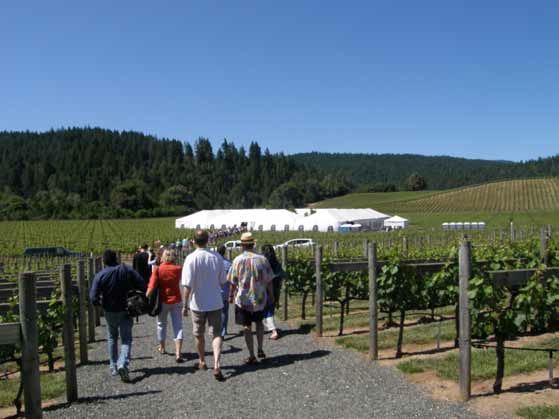 Almost all the 29 winery members of the Anderson Valley Winegrowers Association participated in Open House Sunday. Many members of the Anderson Valley Winegrowers Association and other wineries located outside the Valley but produce Anderson Valley Pinot Noir also participated, including Bruliam Wines, Cakebread Cellars, Copain Wines, Couloir Wines, Expression Vineyards, Frati Horn Wines, Fulcrum Wines, Ici/La-Bas, La Crema, Littorai Wines, MacPhail Family Wines, Maggy Hawk/Windracer, Onward Wines, Saintsbury, Twomey Cellars, Waits-Mast Family Cellars, Williams Selyem, and Witching Stick.
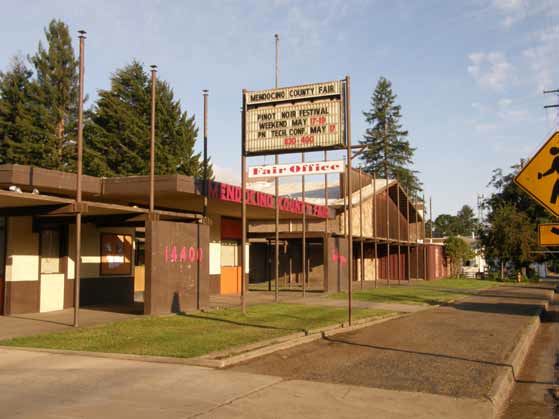 Glenn McGourty, viticulture and plant science adviser for UCCE Davis gave a report on the state of Pinot Noir and viticulture in Mendocino County. He noted that planting of new Pinot Noir vineyards had slowed possibly due to tight availability of vines from nurseries. His talk is summarized in the following slides.
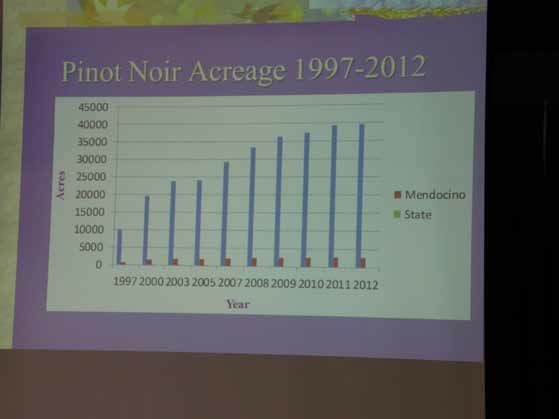
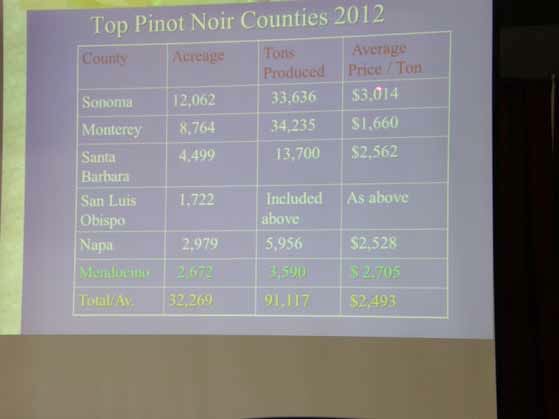
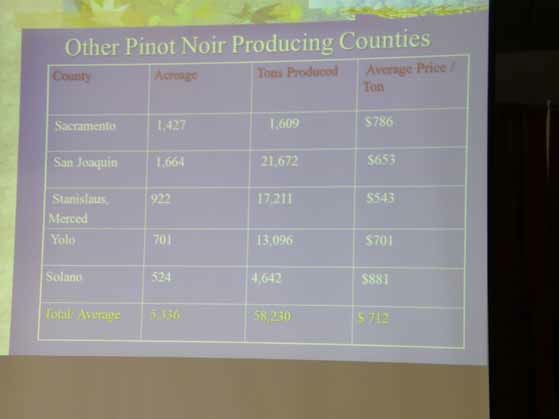 The high production tonnage in the San Joaquin Valley is due to cropping Pinot Noir at a very high 10 tons per acre.
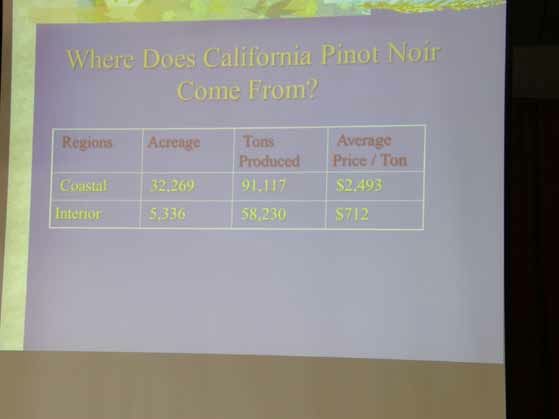 A tasting of the latest fad in Pinot Noir, Pinot Noir Blanc, featured wines from Angle Camp Vineyard, Balo Vineyards, and Alta Winery in Napa. Pinot Noir Blanc is a white wine made from Pinot Noir by pressing the grapes after harvest but avoiding significant skin contact with the juice. The pulp and juice of the Pinot Noir grape are clear (white) and the resulting wine is the essence of Pinot Noir grape juice. The wine is white gold or golden copper in color and can be lean and crisp or full bodied and highly flavorful, depending on how the juice is handled. In either case, Pinot Noir Blanc features primarily white wine flavors: Pinot Noir without the Noir. It is a curiosity that may reach a niche market, but its biggest drawback is the expense of Pinot Noir grapes required to produce it, making it a rather expensive white wine. Some would criticize it as a bastardization of Pinot Noir. Mel Knox, a thirty-year veteran of the oak barrel trade and a long time broker for Tonnellerie Francois Frères and Tonnellierie Taransaud, spoke about barrel selection for Pinot Noir. For many years, he has sourced fruit from Anderson Valley for his own Pinot Noir label, Ici-la Bas, produced with Jim Clendenen of Au Bon Climat. He presented a Pinot Noir from Molnar aged in Hungarian tight grain, high toast oak. Four different wines were compared with oak of different seasoning air dry periods: (1) 12 months, (2) 18 months, (3) 24 months, and (4) 30 months. The conclusions were that more nuance and better integration of oak occurred as the interval of seasoning increased. Also, less toast, less vanilla and better phenolics were observed with more seasoning. In summary, Pinot Noir seems most amendable to more lengthy seasoned oak. I presented a talk on Pinot Noir Suitcase Clone “828” and revealed the intriguing story behind this mislabeled clone. This story was published previously in the PinotFile at www.princeofpinot.com/article/1268/. The afternoon session began with a perspective tasting of diverse Pinot Noirs from the Anderson Valley. Three wines were presented but this really turned out to be more a demonstration of differences in winemaking style than in Anderson Valley diversity. (1) 2010 Baxter Valenti Vineyard Mendocino Ridge Pinot Noir: This vineyard overlaps the Mendocino Ridge and Anderson Valley AVAs at 1200 to 1600 feet elevation about 4.5 miles from the Pacific Ocean. 30% whole cluster. Aged 22 months in100% neutral oak barrels. A rather austere wine featuring delicate red fruit flavors and lively acidity. (2) 2010 Knez Cerise Vineyard Anderson Valley Pinot Noir: This vineyard sits at 550 to 1150 feet elevation and has three different soil profiles. Made with 50% whole cluster, native yeast, 33% new French oak, unfined and unfiltered. Tasteful core of sweet fruit and noticeable length and intensity on the finish. A terrific wine. (3) 2010 Goldeneye Gowen Creek Vineyard Anderson Valley Pinot Noir: This vineyard is located on the Anderson Valley floor along Highway 128. Brix at harvest 25º. 70% Mount Eden, 30% 777. Aged 16 months in 70% new French oak barrels. Rich, sappy and very fruit forward with firm tannic structure and oak influence. The final presentation was a Wiley Vineyard Focus Tasting Panel with Brad Wiley, owner of Wiley Vineyards. His family started the publishing company, John Wiley & Sons, and he still devotes time to that company. The iconic 25-acre Wiley Vineyard was first planted in 1972, making it one of the earliest vineyard plantings in the Anderson Valley. It is located on a ridge top above the fog line at the extreme northern end of the Anderson Valley, and is one of the most westerly vineyards in the Anderson Valley, only ten miles inland from the coast. Note location on the map below. Wiley owns a total of nearly 200 acres of conifer forest and fruit trees here.
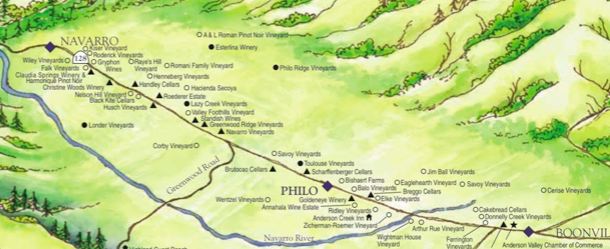 The area has a history dating to 1871 when the first homesteader planted apples, prunes, pears and oats to feed horses on the site. It was farmed until 1930 and laid fallow until 1970 when Wiley arrived and acquired the land which was then affordable. The land was ripped in 1971 and planted the following year. Wiley followed the plantings at Edmeades and Husch and preceded the vineyards at Lazy Creek and Navarro Vineyards. The site has a very long growing season with bud break in early April or sooner and harvest October 20 or even later. The vineyard is exposed to less diurnal fluctuation than Boonville to the South and is typically eight degrees cooler. Soils are sandy loam with some clay. Yields per acre are very limited, but even in cool years, the fruit achieves ripeness. Planting began with the Stony Hill clone of Chardonnay but the grapes would not ripen (he sold them to Schramsberg for sparkling wine) and the vines were afflicted with leaf roll within five years. Productivity was very low. Riesling was added in 1976 and all vines were on their own roots until Pinot Noir (Pommard 5 from Erath in Oregon and David Bruce clone) was added in 1982. In 1997, Dijon clones and 538, a Colmar clone brought to the United States originally by Gloria Ferrer, were planted. More Pinot Noir was added in 2000 bringing the total to 20 acres. There are also 2 acres of Pinot Gris. Wiley has sold grapes to Breggo, Drew, Harrington, Phillips Hill, Schramsberg, and Woodenhead. The Anderson Valley Wiley Vineyard should not be confused with the 123-acre Wiley Vineyard in the Arroyo Seco region of Monterey. A 2012 Witching Stick Wiley Vineyard Pinot Noir was presented by Witching Stick winemaker Van Williamson. The 2012 vintage was unusual in that yields were an unprecedented 3.5 tons per acre. The fruit picked for this bottling was quite ripe in character and the resulting wine was inky in color, featuring blue and black fruits including boysenberry, and the wine was a tad hot on the finish. The usual fruit profile from this vineyard is red fruits, roses, velvets and spice.
Trade Tasting of Anderson Valley Pinot NoirTwenty-five wineries presented one wine for a tasting by the trade and press which I attended. One interesting note came out of this tasting and was first proposed to me by sommelier Chris Sawyer. He has noted the herb pennyroyal, which grows wild in the Anderson Valley, in the aromatic profile of some Anderson Valley Pinot Noirs, particular those from Black Kite Vineyard. James MacPhail has found notes of pennyroyal in his Toulouse Vineyard Anderson Valley Pinot Noir. Pennyroyal (Mentha pulegium), also called squaw mint, mosquito plant and pudding grass, is a flowering herb that has a strong aroma similar to spearmint. Pennyroyal oil is toxic to both humans and animals, but the dried herb is used for medicinal purposes. The Greeks and Romans used pennyroyal to flavor their drinks, particularly wine.
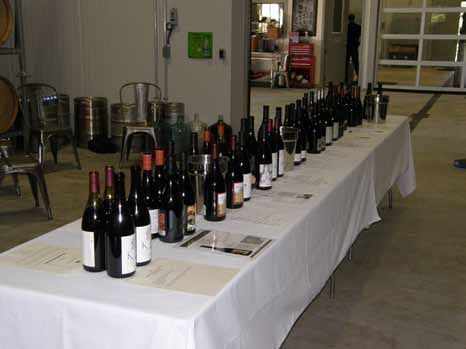 Many of the wines offered were from the 2010 vintage, featuring one of the coldest summers on record in the past forty years. The result was slow ripening and extended hang time. Grapes brought in before the October rains were often fully mature and balanced. 2011 was one of the coldest and wettest vintages in memory. Wet winter and spring weather disrupted bud break, bloom and fruit set. The cool summer growing season culminated in a prolonged and occasionally wet harvest.
2011 Angel Camp Anderson Valley Pinot Noir 13.4% alc., 250 cases, $52. Released June 1, 2013. Angel Camp is a 12-acre vineyard located in the Deep End of the Anderson Valley nestled between the Navarro River and Highway 128. Planted in 2006 to 9 different clones. 5 clones in this wine: 777, David Bruce, Martini, Pommard and Swan. Winemaker Jon Keyes. 100% de-stemmed, 5-day cold soak, native yeast fermentation, natural malolactic fermentation, aged in 40% new French oak barrels. Unfined and unfiltered. · Moderate light reddish-purple color and slight haze (unfiltered) in the glass. Aromas of oak, sandalwood and baking spices. Vivid cherry and red plum flavors with a heavy tug of oak, and a refreshing finish with a good cut of acidity. A little flat and should benefit from another 6-12 months in bottle. Good.
2011 Balo Vineyards Estate Anderson Valley Pinot Noir 13.1% alc., pH 3.52, TA 0.57, 211 cases, $40. Released May 1, 2013. Vinified by winemaker Jason Drew. Clones are 777, 828, 115, Pommard and Martini. Aged 15 months in 30% new French oak. · Light reddish-purple color in the glass. Delicate aromas and flavors of red fruits and herbs with a note of Asian 5-spice. Nicely integrated oak and soft on the palate. Highly approachable. Good (+).
2011 Cakebread Cellars Anderson Valley Pinot Noir 14.4% alc., pH 3.67, TA 0.58, $49.50. Released October 1, 2012. Winemaker Julianne Laks. Each clone fermented separately. Post-fermentation maceration for several weeks. Aged 11 months in 37% new French oak barrels. · Moderate reddish-purple color in the glass. This wine is true to the Cakebread Pinot Noir style exhibiting prominent oak on the nose and palate. Middleweight flavors of black raspberries and black cherries clothed in modest tannins and toasty oak, finishing with some length. The fruit is quite alluring, but I just can!t get beyond the oak. Worth revisiting in a year. Decent.
Note: In 2001, Cakebread developed what is now a 46-acre Pinot Noir vineyard in Anderson Valley known today as Apple Barn. It is planted to six clones of Pinot Noir. In 2011, Cakebread acquired Annahala Vineyard, just a half-mile west of Apple Barn. Annahala contains 60 acres and 8 clones of Pinot Noir. Soon, Cakebread will be offering three Anderson Valley Pinot Noirs, one from each of the Anderson Valley vineyards and a blend of fruit from the two.
2010 Claudia Springs Klindt Vineyard Anderson Valley Pinot Noir 13.9% alc., pH 3.70, TA 0.61, 220 cases, $32. Released May 2012. Pommard 4 and 5, 113, 115, 777 and 667. 10% whole cluster. Native yeast fermentation and natural malolactic fermentation. Aged 7 months in French oak barrels after blending. · Medium reddish-purple color in the glass. A very appealing wine with bright aromas of cherries, strawberries, rose petals, spice and sandalwood. Mid weight flavors of cherries, baking spices and savory herbs, finishing long and generous. Very well crafted and beautifully balanced. Very good (+).
Note: Sadly, Claudia Springs Winery, founded in 1989 by Bob and Claudia Klindt, has ceased operations and the Klindt Vineyard has been sold. The Klindts plan to move to Lake County, but Bob will continue to do some consulting winemaking. I would buy any of these very good value priced Claudia Springs wines while you can.
2011 Couloir Monument Tree Vineyard Anderson Valley Pinot Noir 13.4% alc., pH 3.66, TA 0.58, 169 cases, $44. Released April 15, 2013. Vineyard planted in 1999 to Dijon clones by Duckhorn Vineyards and now owned by Twomey Cellars. Situated in the Deep End of the Anderson Valley, the vineyard is farmed by Ardzrooni Vineyard Management. Clones 777, 667 and 115. 50% whole cluster fermented. 7-day cold soak, native yeast fermentation, aged 11 months in 40% new French oak barrels. Unfined and unfiltered. · Medium reddish-purple color in the glass. Hi-tone scents of black cherry glaze, tea leaf and sandalwood. Luscious, perfectly ripened boysenberry, plum and black cherry fruits caressed by modest tannins, finishing with impressive aromatic intensity. This vineyard performed well in this vintage and this wine was one of the best wI tasted from the Anderson Valley. Very good (+).
2010 Elke Vineyards Donnelly Creek Vineyard Anderson Valley Pinot Noir 14.3% alc., pH 3.70, TA 0.64, 500 cases, $34. Released January 2013. 14th vintage of this wine bottled under the family “Blue Diamond.” 20-year-old vines located just outside the town of Boonville. Five clones cane-pruned and trained using a combination of double-guyot (traditional style of Burgundy) and arc-coeur (lesser known style of Alsace). 100% de-stemmed, inoculated, aged 11 months in 35% new Francois Frères oak barrels. Unfined and unfiltered. · Moderately dark reddish-purple color in the glass. The nose draws you into the glass with effusive aromas of dark cherries and berries, spice and oak. Impressive attack of black cherry and black raspberry fruits embracing toast and vanilla-infused oak, balanced tannins and a finish that makes you sit up and take notice. Gets better over time in the glass. Very good.
2011 Expression Annahala Vineyard Anderson Valley Pinot Noir 14.3% alc., 140 cases, $48. ReleasedMay 1, 2013. Vineyard is halfway between towns of Philo and Boonville on Highway 128.100% destemmed, whole berry fermentation in open-top fermenters, 1-week cold soak, gentle pump-overs, slight extended maceration post-fermentation. · Medium reddish-purple hue in the glass. Aromas of cherries, sandalwood and dried herbs. Juicy black cherry flavor with a peculiar note probably associated with oak. Easy to drink with supple tannins and finesse. Good.
2010 Foursight Wines Charles Vineyard Anderson Valley Pinot Noir 14.1% alc., pH 3.59, TA 0.62, 170 cases, $46. Released May 2013. Crafted from all four clones grown in the estate vineyard: 777, 114, 115 and Pommard 05. 30% whole clusters, native yeast fermentation and native MLF. Aged in 40% new French oak barrels. · Moderately light reddish-purple color in the glass. Aromas of cherries, forest floor and the slightest oak. Lighter than the 2009 version of this wine and very similar in flavor but with a redder fruit profile. Red cherries are most evident with a bright backbone of citrusy acidity and a juicy finish. Very approachable and easy to drink. Maybe comfortable is the best word. A righteous food wine. Very good.
2010 Goldeneye Anderson Valley Pinot Noir 14.5% alc., 16,293 cases, pH 3.79, TA 0.53, $55. Released November 2012. Estate fruit blended with fruit from independent growers in the Anderson Valley. 7 vineyards and over 200 individually fermented and aged lots. 90% estate grapes including fruit from all four estate vineyards with the core from Gowan Creek Vineyard. Average sugar at harvest 25º Brix. Aged 16 months in 70% new and 30% second vintage French oak barrels. · Moderately light reddish-purple color in the glass. The nose offers an appealing marriage of cherry fruit and oak. The tasty, sweet cherry core is complimented by a toasty new oak sheen. Firm tannins balance the rich fruit and the finish has welcome length. A little more obvious oak than I prefer, but I can appreciate the style and the fruit is hard to resist. Very good.
2011 Fulcrum Anderson Valley Pinot Noir 14.1% alc., 1,032 cases, $54. Released June 1, 2013. Clones 777 and 115. Aged 16 months in 29% new French oak barrels. · Moderate reddish-purple hue in the glass. I was really attracted to the nose on this wine which offered an explosion of aromas including cherries, molasses, and roseate notes. Really delivers sumptuous flavors of cherries, raspberries and strawberries with a hint of complimentary spice that carries over onto the big finish. Very good.
2010 Greenwood Ridge Vineyards Mendocino Ridge Pinot Noir 13.0% alc., pH 3.76, TA 0.63, 250 cases, $30. Released January 2013. The Mendocino Ridge Estate vineyard is only six miles from the Pacific. Wine has been made from this site for more than 30 years. Aged 8 months in French oak barrels. · Moderately light garnet color in the glass. Perfumed with cherries, clove, redwood, and sandalwood. Light in weight and delicate, with a core of red cherry fruit underlain with notes of oak and spice. Easy to drink and highly approachable. Decent (+).
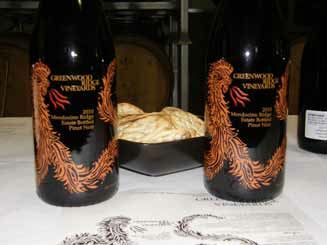
2010 Handley Cellars Estate Reserve Anderson Valley Pinot Noir 14.5% alc., pH 3.64, TA 0.56, 98 cases, $52. Released February 2013. Martini clone. Aged 9 months in 30% new French oak barrels. · Moderately dark reddish-purple color in the glass. A full-bodied wine with very ripe black fruit aromas and flavors that is sturdy on the palate with a moderate tug of oak in the backgrou nd. Would benefit from decanting or further time in bottle, but the potential is obvious. Very good.
2007 Harmonique Delicacé Anderson Valley Pinot Noir 14.4% alc., pH 3.57, TA 0.61, 422 cases, $44. Wädenswil clone from Ferrington Vineyard, 777 from Klindt Vineyard and Pommard from Conzelman Vineyard. · Moderately light reddish-purple color in the glass. Not as aromatic as the Elegancé, but offering a pleasant array of darker red cherry and berry aromas. A step up in intensity with a hearty core of black cherry fruit complimented by a savory, spicy, chocolaty edge. Very soft in the mouth with a noticeably long finish that sports a bright cut of acidity. Very good.
2010 Husch Anderson Valley Pinot Noir 13.9% alc., TA 0.57, 2,555 cases, $23. Released January 1, 2013. Grapes were picked a half month later than normal. 25% whole cluster. Aged 9 months in 25% new French oak barrels. · Moderately dark reddish-purple color in the glass. Bright cherry, strawberry and peat aromas lead to mid weight flavors of black cherries and spice. Very flavorful, with balanced tannins and a cherry-driven finish that goes on and on. One of the most consistent Anderson Valley bottlings in every vintage. Very good.
2010 Knez Cerise Vineyard Anderson Valley Pinot Noir 13.6% alc., pH 3.58, 500 cases, $42. Released October 2012. Clones are Martini David Bruce, Pommard, Wädenswil, and 777. 17-year-old vines. 50% whole cluster. Aged in 33% new French oak barrels. 25% of press wine added to each barrel after pressing the must. Racked once, the day before bottling. · Very light crimson color in the glass. Highly aromatic featuring scents of cherry pie, spice and dried herbs. Fresh and vibrant flavors of cherries, brewed tea, savory herbs and edible flowers. Quite juicy and refreshing with vibrant acidity and composed dry tannins. Very good.
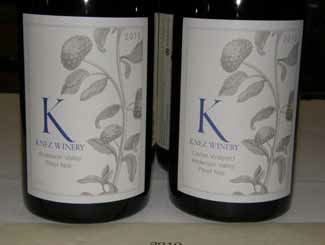
2010 MacPhail Wightman House Vineyard Anderson Valley Pinot Noir 14.9% alc., pH 3.80, TA 0.56, 132 cases, $55. Released spring 2012. 100% Martini clone. 100% de-stemmed, 5-day cold maceration, indigenous yeast fermentation, native malolactic fermentation in barrel, batonnage in barrel once a week for 3 months, aged 11 months in 50% new and 50% 1 and 2-year-old French oak barrels. Unfined and unfiltered. · Moderately light reddish-purple color in the glass. Fruit-filled nose featuring black cherries, roseate notes, spice and oak. Discreetly concentrated core of juicy and delicious cherry and cranberry fruits with oak adding smoky, spicy layers. Very good.
2009 Nelson Hill Deep End Vineyard Anderson Valley Pinot Noir 13.9% alc., pH 3.82, 205 cases, $36. Released May 1, 2013. Clones are 777, 114 and 115. Aged 12 months in 50% new French oak barrels. Unfined and unfiltered. · Light reddish-purple color in the glass. Shy fruit on the nose with primary aromas of dried herbs and oak. Cherry fruit dominates accompanied by an offbeat earthy, herbal tone and some dry tannins. Decent.
2011 Phillips Hill Two Terroirs Anderson Valley Pinot Noir 13.5% alc., pH 3.60, TA 0.58, 125 cases, $40. A blend of 70% Cerise and 30% Ridley vineyards. Clones are 115, Pommard and Wädenswil (Cerise) and 777 (Ridley). Natural yeast whole berry fermentation, aged 16 months in 30% new French oak barrels. · Light reddish-purple color in the glass. Alluring aromas of strawberries, cherries, and caramelized and spiced oak. Juicy flavors of strawberries, cranberries and red cherries with a hint of spice, supple tannins, and a tangy, dried cherry finish. Good.
2009 Philo Ridge Vineyards Anderson Valley Pinot Noir 14.1% alc., pH 3.57, TA 0.69, 455 cases, $34. Released June 1, 2012. Produced at the first 100% solar powered winery in the United States. Sourced from Philo Ridge Vineyards and Ferrington Vineyards. Clones are 115, 777, 667, Pommard and Wädenswil. Winemaker is Heather McKelvey. 100% de-stemmed, whole berry fermented, gentle pressing, aged 24 months in 35% new French oak barrels and the remainder in neutral oak barrels. Unfined and unfiltered. Aged 9 months in bottle before release. · Light reddish-purple color in the glass. Aromas of strawberries, clay, briar and herbal oak. Middleweight flavors of cherries, boysenberries and plum. A relatively mature wine with well integrated tannins and balanced acidity. Good.
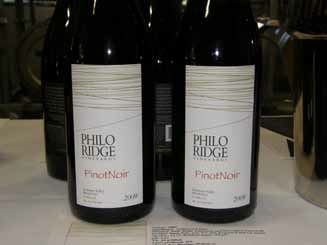
2009 Roederer Estate Anderson Valley Pinot Noir 14.4% alc., pH 3.81, TA 0.50, 320 cases, $23. Released October 1, 2012. 100% de-stemmed, aged 10 months in a blend of new and old French oak barrels, lightly filtrated. · Medium reddish-purple color in the glass. Aromas of black cherry and oak-driven caramel and toffee. Nicely concentrated flavors of black cherries and boysenberries with spice and oak in the background. The fruit makes a notable mid palate impression which carries through on the finish. Good.
2007 Scharffenberger Cellars Anderson Valley Pinot Noir 13.5% alc., pH 3.73, TA 0.56, 500 cases, $20. Released October 1, 2012. A blend of nine clones from multiple vineyards. 100% de-stemmed, 20% cold maceration, aged 11 months in 20% new French oak barrels. Lightly filtered. · Moderately light reddish-purple color in the glass. Delicate aromas and light flavors of herbal cherries. Rather tart, with firm tannins. Decent.
2009 Toulouse Vineyards Estate Pinot Noir 14.3% alc., pH 3.65, TA 0.57, 800 cases, $50. Released May 2012. Clones 115, 667, 777 and Wädenswil. · Medium light reddish-purple color in the glass. Delicate aromas of cherry and strawberry with plenty of new oak evident. Flavors of very ripe red and black berries with oak-driven notes of vanilla and cedar in the background. Moderately lush with satisfying Bing cherry notes singing on the finish. Good.
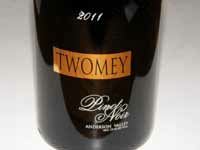 2011 Twomey Anderson Valley Pinot Noir 13.1% alc., pH 3.52, TA 0.56, $46 (Magnums too, $90). Released April 27, 2013. Sourced from the estate Monument Tree Vineyard and Ferrington Vineyard. · Moderately light reddish-purple hue in the glass. Glorious aromas of fresh black raspberry jam, potpourri and spice. I just love that smell. Really delicious marriage of dark berries and cherries with a subtle mocha note. The ripe fruit really pops, reaching every corner of the mouth, and finishing strong and satisfying. There is an appealing tension and focus to this wine and the satiny texture is captivating. An incredible effort in a difficult vintage and my kudos to winemaker Ben Cane. Still great the following day from a previously opened and re-corked bottle when my family polished it off. A 2013 All American.
2010 Waits-Mast Cellars Londer Vineyard Anderson Valley Pinot Noir 13.8% alc., 100 cases, $40. Released May 2012. Londer Vineyard is located west of Philo, surrounded by a forest of conifers. Clones 115 and Swan picked at 24º to 25º Brix. 100% de-stemmed, native yeast fermentation, aged 17 months in 30% new French oak barrels. · Moderate reddish-purple color in the glass. Very aromatic with scents of dark red cherries and berries with a kiss of oak. Full-on mid palate attack of black cherry flavor that is sappy and showy, sporting young, firm tannins and a remarkably fruit-filled finish that goes on and on. Needs time to fully integrate the tannins. Very good.
2009 Wind Racer Anderson Valley Pinot Noir 14.7% alc., 246 cases, $50. Released fall 2012. Clones 667, 777 and Wädenswil. !00% de-stemmed, 70% whole berries, 5-day cold soak. Aged 15 months in 34% new French oak barrels. · Medium reddish-purple hue in the glass. A richly concentrated wine featuring aromas and flavors of black cherries and black raspberries with a hint of herbs and oak. Impressive finishing length. This wine will find fans looking for powerful fruit flavors. Very good.
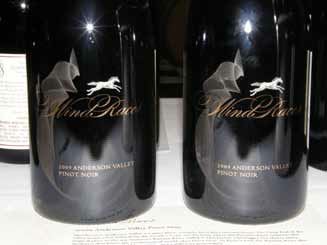 Lodging is always a challenge in the Anderson Valley but there are some new appealing possibilities. I have already mentioned the Madrones. In nearby Yorkville Highlands, there is the Ravenridge, two fully appointed rustic cottages, one of which comfortably accommodates four adults and the other one couple. Visit www.ravenridgecottages.com. Stony Bottom Gardens came highly recommended to me by friends. The beautifully landscaped property of 5! acres of English-style gardens is within walking distance of the town of Boonville. Three deluxe accommodations are offered: the Suite, the Cottage and the Annex. Ginger and Walt Valen are your hosts. 707-895-9424.
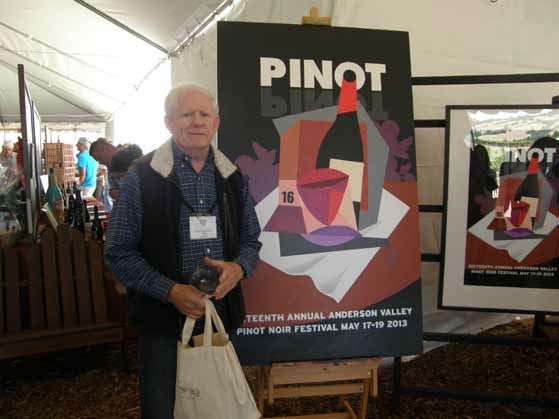
Recent Stops on the Pinot TrailI left Anderson Valley on a Pinot high and headed for the Russian River Valley for a little Pinot rehab. There were five stops on my agenda: Benovia Winery, Lynmar Estate, Keller Estate, Freeman Vineyard & Winery, and Kosta-Browne. I will defer Kosta-Browne to an article to follow as there is much to discuss about their gleaming new winery. I tasted through their entire lineup of 2011 releases upon my return home.
I sat down on April 20 with Sullivan to taste the four Pinot Noirs and two Chardonnays from the 2011 vintage. Yields were down significantly in this vintage as mildew pressure during the growing season presented a challenge. The cold weather delayed bud break, slowed ripening and pushed harvest back a month. Yields were small but of high quality. Benovia no longer sources wine from Savoy Vineyard in Anderson Valley, and no fruit was forthcoming from Sonoma Coast sources so only four 2011 Pinot Noirs are offered. The wines are lighter and less concentrated in the 2011 vintage, but have bright acidity, refreshing charm and are readily approachable. The 2013 spring release includes a 2012 Rosé of Pinot Noir ($20), a 2011 Russian River Valley Pinot Noir, and a 2011 Russian River Valley Chardonnay. A limited number of 2010 wines are still available. Tasting is by appointment in a pleasant sit down room in the winery’s hospitality center. Visit www.benoviawinery.com.
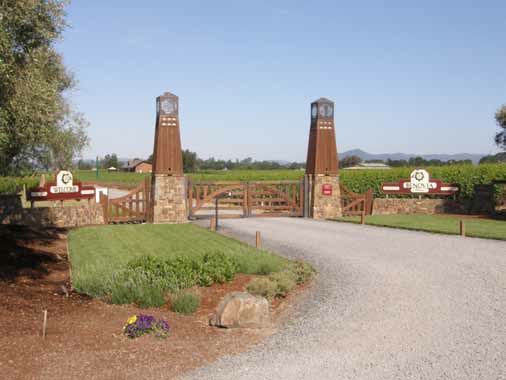
2011 Benovia Russian River Valley Pinot Noir 14.1% alc., pH 3.61, TA 0.63, 1,600 cases, $38. Released March 2013. 60% estate Martaella Vineyard with the remainder from Martinelli, Lingenfelder, Dutton and Petersen vineyards. A blend of Calera, Swan and Mt. Eden selections, Pommard, and Dijon “828” and 943. 10% whole cluster. Indigenous yeast fermentation. Aged 16 months in 40% new French oak barrels. · Moderately light reddish-purple color in the glass. Nicely perfumed with fresh cherries and roseate notes. Flavors of Bing cherries, cola and exotic spice. Drinks bigger than the color would indicate. A solid, go-to, daily drinker. Good.
2011 Benovia Cohn Vineyard Sonoma County Pinot Noir 14.2% alc., 50 cases. Unreleased. This vineyard was rehabilitated and is now in its sixth year of being farmed organically. The vines are in much better health, but yields are still minuscule at ! ton per acre. · Moderately light reddish-purple color in the glass. Fresh, clean aromas of plum sauce and redwood. Very polished mix of red and purple stone fruits with an accent of brown spice. Very soft tannins and welcoming mouth feel. Good to Very good.
2011 Benovia Bella Luna Russian River Valley Pinot Noir 14.5% alc., 250 cases. 100% estate fruit. 30% whole cluster. · Moderately light reddish-purple hue in the glass. The nose is not open for business yet showing faint aromas of purple fruits. Middleweight flavors of blackberries, black plum and spice underlain with subtle oak, sporting supple tannins, and finishing with good intensity. I especially like the tannic mouth feel on the end. Very good.
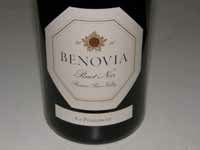 2011 Benovia La Pommeraie Russian River Valley Pinot Noir 14.5% alc., 400 cases. Sourced from Martinelli’s Zio Tony Vineyard with yields of 2 tons per acre. Clones 777 and “828.” · Medium reddish-purple color in the glass. Terrific aromatics that make you really sit up and take notice. Scents of black raspberry, plum reduction sauce, and rose petals. The most intensely flavored and concentrated Pinot Noir in this vintage but still very approachable, largely due to restrained tannins and bright acidity. A special wine already. Very good (+).
2011 Benovia Russian River Valley Chardonnay 14.1% alc., pH 3.51, TA 0.68, 750 cases, $34. Released March 2013. Sourced primarily from Martaella Estate Vineayrd. Old Wente, Dijon and suitcase selection. Fermented in barrel with indigenous yeast and aged for 14 months in 35% new French oak barrels. · Light straw color in the glass. Bright aromas of lemon curd, peach and oak vanillin. Crisp and refreshing, featuring flavors of lemon, grapefruit, and hazelnuts. Lively acidity and a very dry, lemon drop finish. Good.
2011 Benovia La Pommeraie Russian River Valley Chardonnay 14.5% alc.. Dijon clones. · Light straw color in the glass. Opens slowly over time revealing aromas of baked pear and nutty oak. A bit bigger than the AVA Chardonnay, with a more seductive smooth and slightly creamy mouth feel. Nicely flavored with notes of apple, pineapple and lemon backed by bright acidity. Still a bit awkward and needs more time in bottle. Good to Very good.
Benovia has the perfect vineyard hideaway cottage secluded in Martaella Estate Vineyard that is available for rent. It is ideally located in the Russian River Valley about half way between Sebastopol and Healdsburg.
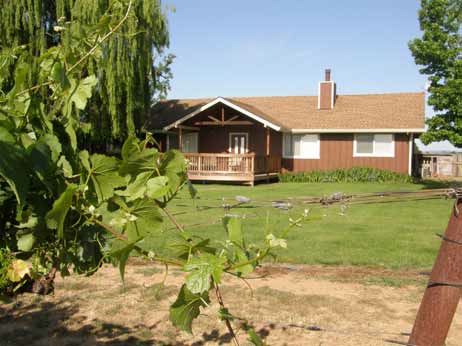
 I visited Lynmar Estate and tasted through multiple barrels of the 2012 vintage with Finley (his first vintage at Lynmar) and vineyard manager Jason Saling. Finlay reminds me of “Mini Me” in the Austin Powers movie for he is a clone of Michael Browne in the cellar. He leads a barrel tasting like his pants are on fire, rapidly pulling samples from several barrels in succession, exhibiting overwhelming enthusiasm. His 2012 Pinot Noirs in barrel also remind of Michael Browne’s style of wine. Finlay has plenty of enviable vineyard material to work with and a beautiful gravity flow winery and caves to work in. Saling is a very talented vineyardist and works closely with Finlay to limit yields for quality. The Estate Quail Hill Vineyard was planted in 1971 originally and has some of the oldest Pinot Noir and Chardonnay vines in the Russian River Valley. Select heritage blocks were retained and a phased replanting undertaken of 71% of Quail Hill Vineyard in 1996. Today the vineyard is 70% Pinot Noir (14 clones) and 30% Chardonnay (4 selections), farmed in 53 individual blocks. Multiple Pinot Noirs are offered including Quail Hill Vineyard and special block bottlings within that vineyard, a Russian River Valley appellation blend, and several vineyarddesignated wines from sourced fruit. Finlay is currently getting his feet wet at Lynmar, getting to know the many clones (Dijon, Mt. Eden, Calera, Swan, “828,” Pommard and Bebe, a Spanish clone), and adjusting coopers and barrel treatments. He prefers about 40% new French oak with about 18 months elevage in barrel and 6 months in bottle before release. The wines spend about 21 to 24 days on the skins with some whole cluster determined lot by lot and varying with the vintage. Grapes are picked at 26º to 27º Brix resulting in alcohols in the 14.5% range. All winemaking is by gravity and sulfur levels are kept low. The style is full and rich, but not cloying, jammy or pruney. He says, “I am looking to produce juicy wines that show good tension.” (Tension is a word Michael Browne often uses). My early impression of the 2012 vintage is quite favorable and many of the 2012 Pinot Noirs tasted had deep color, bright aromatics, abundant sappy Pinot fruit, and long, glorious finishes. The wines made with significant whole cluster were particularly impressive. Vineyard designate wines for 2012 will include Terra de Promissio, Jenkins, Hawk Hill (last vintage for Lynmar), Kanzler (first time for Lynmar). Possibly a Sebastopol Hills blend will be offered as well. Visit the Lynmar Estate website for more information at www.lynmarwinery.com. The Lynmar Estate Hospitality Center is the most comfortable and architecturally stunning of any in the Russian River Valley. Wine tastings (several offered), estate tours, and wine and food pairing (picnic pairing, pinot and pizza) are offered. A wine country getaway, the Bliss House, situation on the Lynmar 100-acre property, is offered to advocates with priority, but is also available to the public.
2008 Lynmar Estate Quail Hill Vineyard Russian River Valley Pinot Noir 14.8% alc.. · Dark reddish-purple color in the glass. Aromas of very ripe berries and cherries with a hint of cola. Full-bodied and lush, veering to the ultra ripe fruit side, offering flavors of black cherry and grilled stone fruits. Soft and plush on the palate with a firm tannic backbone, finishing with a little heat. Good.
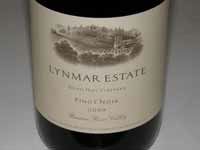 2009 Lynmar Estate Quail Hill Vineyard Russian River Valley Pinot Noir 14.5% alc.. 14 clones. · Dark reddish-purple color in the glass. Very enticing aromas of spiced cherry, clove, plum and vanilla. Layers of flavor arrive on the palate with aplomb, including black cherry, black plum, fennel, cola and black tea. Perfectly ripe and juicy with modest tannins and impressive power on the finish. Crafted beautifully and notable for its seamless qualities. Still enchanting the following day when tasted from a previously opened and re-corked bottle.
Appropriately, the name Keller originates from the German word for “cellar.” The Keller family’s Coat of Arms, which is printed on their labels, represents the cellar guard, who guards his prized treasures with a well-kept key. Located on the eastern edge of the Petaluma Gap overlooking the Petaluma River, the Keller Estate’s La Cruz Vineyard was originally planted to Chardonnay in 1989. The first grapes were sold to Rombauer and the potential of the site was realized. Pinot Noir was added in 1999, the following year the Keller Estate label was started, and the first vintage was released in 2001. Shortly thereafter, a modern, gravity-flow winery, designed by Ricardo Legorreta, a noted Mexican architect, was built and is among the most beautiful wineries in Sonoma County. The winery is constructed out of limestone quarried from the beds of the Yangtze River.
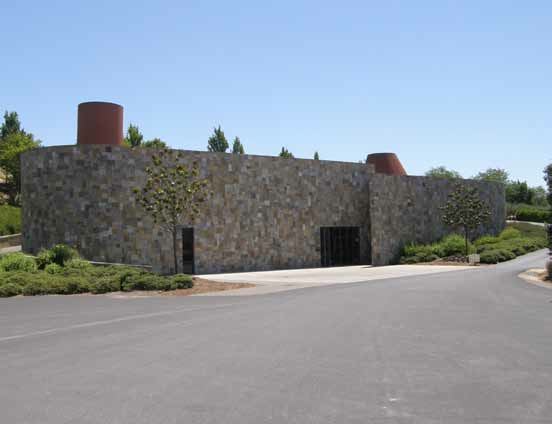 A majority of the estate including all the Chardonnay, Syrah, Pinot Gris and slightly over half of the Pinot Noir is grown on the lower hills where the mineral laden clay soils were once San Pablo Bay sea beds making Keller Estate’s terroir unique. The 20-acre El Coro block is planted to seven different clones of Pinot Noir and sits high on a ridge top where the vines are more exposed to the maritime winds and fog. Here the soils are a thin loam and clay with a volcanic subsoil. The emphasis throughout the estate is diversity of clones. At El Coro, there are special plantings of Swan, “828,” and La Tache selections. Arturo’s daughter, Ana Keller, a biochemist by training, has brought Keller Estate into the forefront of the Petaluma Gap region of the Sonoma Coast appellation. She grew up in Mexico City, and fell in love with winemaking while spending several holidays in the Loire Valley participating in harvest. She holds a degree in Biopharmaceutical Chemistry from the University of Mexico and a Masters in Pharmaceutical Development from King’s College in London. It was in London that Ana took her first formal wine tasting lessons. She started in the winery’s lab in 1998 and now manages the estate and actively participates in the estate’s viticulture and winemaking. Three Pinot Noirs are offered: Keller Estate La Cruz Vineyard, Keller Estate El Coro, and a reserve, Keller Estate Precioso. A Rosé, Chardonnay, Pinot Gris and Syrah are also produced. Grapes are also sold to other wineries for vineyard-designates and 30% of Keller Estate wine production is exported. The winery has had several notable winemakers through the years. The current winemaker is veteran Alex Holman, a graduate of California State University at Fresno who had previous stints at Paul Hobbs, Dry Creek Vineyard, J. Rickards Winery and Arcana Winery. I highly recommend you visit Keller Estate not only for the superb wines but for a cerebral winery experience. You can marvel at the winery, and view the works of local and international artists including original lithographs from Marc Chagall, sculptures, and if your lucky, one of Arturo Keller’s collector cars, which are frequently parked by the tasting room as a centerpiece for guests to appreciate. Over 5,000 trees have been planted on the estate. Visit the website for tasting room hours and more information: www.kellerestate.com. The entrance to the tasting room is pictured below.
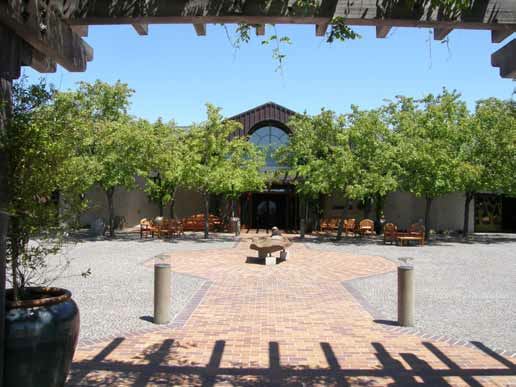 I tasted the following wines with Ana Keller and winemaker Alex Holman. All wines are 100% de-stemmed and whole berry fermented, and aged in modest amounts of new French oak.
2010 Keller Estate La Cruz Vineyard Sonoma Coast Pinot Noir 14.2% alc., 800 cases, $45. Just released. Aged in 30% new French oak barrels. · Moderately light reddish-purple color in the glass. Very aromatic with bright scents of cherries, strawberries and rose petals. Elegant and silky, with moderately intense flavors of red cherries and berries with a hint of spice and a slight confected tone. The tannins are very supple and the finish is refreshing. Good to Very good.
2011 Keller Estate La Cruz Vineyard Sonoma Coast Pinot Noir 14.1% alc., 908 cases, $45. Aged in 30% new French oak barrels. · Moderately light reddish-purple color in the glass. The aromas are equally enticing to the 2010 vintage, but offer darker cherry, blueberry and plum scents. More body and concentration with dark cherry and more berry flavors complimented by spice and oak. Still young, the wine needs time to integrate the oak and achieve balance. Good to Very good.
2010 Keller Estate El Coro Sonoma Coast Pinot Noir 14.2% alc., 465 cases, $52. Aged in 30%-35% new French oak barrels. · Medium reddish-purple color in the glass. A serious, highly pleasurable wine offering aromas of dark berry jam, plum reduction sauce and spice. Mid weight flavors replicate the nose. Full of nuances and beautifully crafted with everything in place. Hard to adequately describe some of the unusual flavors. My notes say, “Crazy about this!” Exceptional.
2011 Keller Estate El Coro Sonoma Coast Pinot Noir 14.2% alc.. · Moderately light reddish-purple color in the glass. Similar to the 2010 vintage, but lighter in weight, offering a fruitier nose and featuring redder fruit flavors such as cherry and raspberry. The acidity is more evident, but the wine has the same complimentary spice notes. A young wine, showing more oak than it will with more bottle age, but the solid tannins and lively acidity predict a great drinking experience down the road. Very good.
Ana Keller is now the President of the Petaluma Gap Winegrowers Alliance (www.petalumagap.com). There are 70 vineyards and 6 wineries in the Petaluma Gap region of the Sonoma Coast. It is ironic that many of the so-called “true” Sonoma Coast wineries (those in the far western reaches of Sonoma County near the Pacific Coast), show disdain for the Petaluma Gap area since they feel it is climatically and topographically distinct from the true Sonoma Coast despite being part of the large Sonoma Coast AVA, yet many of them eagerly source grapes from the Petaluma Gap region. Most of the grapes grown in the Petaluma Gap region (predominantly Pinot Noir) leave the area and show up in Sonoma Coast blends and vineyard designates from other wineries (ie Flowers and Freeman). For example, Terra de Promissio Pinot Noir grapes go to Kosta Browne, Williams Selyem and Lynmar Estate. The tagline for the Petaluma Gap should be, “Follow the Fruit.” Keller notes that the Petaluma Gap is an agricultural haven. Pinot Noir grown in the Petaluma Gap typically gives constant yields since there is little shatter and a larger window to pick at harvest. Because of the maritime winds entering the region through the Petaluma Gap, there is no frost to deal with and very little mildew. She notes that the area was originally underwater, so the Pinot Noir has a signature minerality. The photo below from a vantage point on the Keller Estate shows the distant opening in the coastal range of mountains to the west known as the Petaluma Gap.
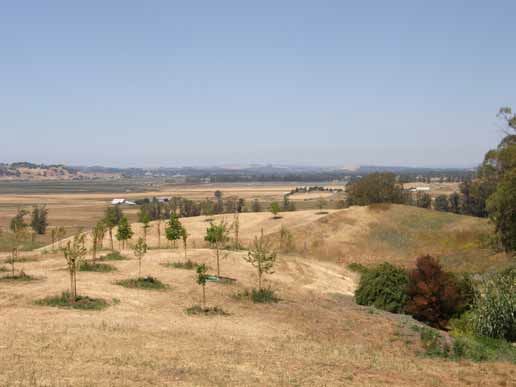 The location of Keller Estate can be seen on this map of the Petaluma Gap.
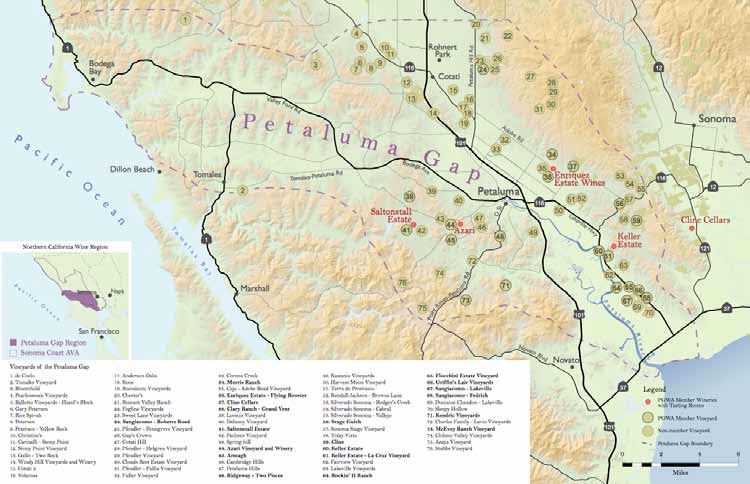
The West of West seminars on Saturday, August 3, will feature “Diamonds in the Sky,” an exploration of the newly formed Fort Ross-Seaview AVA, and “Syrah With a Unique Perspective,” an interactive blind tasting of Syrah from West Sonoma Coast and other important regions around the world. The Grand Tasting of over 40 producers of wines from the West Sonoma Coast will be presented both Saturday, August 3, and Sunday, August 4. The Grand Dinner on Saturday night will feature James Beard finalist Chef Steven Satterfield from Miller Union in Atlanta, George. Dinner wines will be magnums of Pinot Noir and Chardonnay from members of the West Sonoma Coast Vintners and attendees are encouraged to bring something from their cellar as well. Freeman Pinot Noir and Chardonnay were crafted by Ed Kurtzman for several years, but Akiko has now taken the reigns with Ed remaining as a consultant. I briefly tasted the lineup of 2011 wines at the winery. My wife was particularly taken by the Rosé of Pinot Noir which at $20 is a steal. The Sonoma Coast and Russian River Valley appellation Pinot Noirs were representative of the vintage. The Keefer Ranch Pinot Noir was the star in the lineup. The Akiko’s Cuvee is a selection of the best barrels in the cellar chosen by Akiko. This is the most serious wine and needs more time in the cellar. Tasting of Freeman’s wines is done in the winery within a cave and by appointment. Total production is fewer than 5,000 cases, most of which is sold through a mailing list. Visit www.freemanwinery.com. I will be participating in a 10-year retrospective tasting of Freeman Akiko’s Cuvée Pinot Noir before the West of West Festival and will report on that and more about Freeman Vineyard & Winery in an upcoming issue.
2011 Freeman Sonoma Coast Rosé of Pinot Noir 13.9% alc., 1,320 cases, $20. · Moderate ruby red color and clear in the glass. Aromatically appealing with scents of strawberry, cherry, dried rose petal and spice. The flavors echo the nose with accents of herbs and oak. More body and substance than most rosés, this wine drinks more like a Pinot Noir and will pair nicely with substantial foods. A charming cherry note persists on the finish. Good.
2011 Freeman Sonoma Coast Pinot Noir 13.9% alc., 1,320 cases, $44. Broad selection of the appellation with contributions from six vineyards. Aged 11 months in 32% new French oak barrels. · Moderate reddishpurple color in the glass. Aromas of strawberries, cherries, tobacco leaf, green herbs and a hint of oak. Middleweight flavors of black cherry, blueberry and green herbs supported by mild tannins and finishing with some intensity. Nicely balanced and easy to drink. Good.
Coeur de Terre VineyardCoeur de Terre, French for “Heart of the Earth,” was established in 1998 in the Coast Range foothills of the McMinnville appellation in the Willamette Valley, Oregon. Proprietors Scott and Lisa Neal were inspired by a large heart-shaped rock found during planting of the estate vineyard. The location is ideal for Pinot Noir, nestled in a protective valley that offers adequate heat for slow ripening of grapes while protecting them from harsh coastal winds. Finding the site was quite fortuitous, for the Neals became lost on Memorial Day weekend in 1998 while looking for potential vineyard sites. They moved in to their new home on the following Labor Day weekend and set to work developing the site. The first wines were released from the 2002 vintage. The 50-acre property includes 23 acres of vines (mostly Pinot Noir), planted by the Neals in soils of both sedimentary (lower blocks) and volcanic origins (higher elevations). They have hand grafted over 80,000 vines at the estate’s greenhouse nursery that have been the parent material for every block except the original Renelle’s Block, planted with the help of family and friends. Established between 1999 and 2007, the Pinot Noir plantings include Dijon 115, 667 and 777, Pommard, Wädenswil, and field blend selections (selection massale). In addition to Renelle’s Block, there are now four other Pinot Noir blocks (Sarah Jane’s, Abby’s, Tallulah’s Run and Winery), as well as blocks of Syrah, Riesling and Grüner Veltliner. The vineyard has been farmed sustainably using organic methods since its inception.
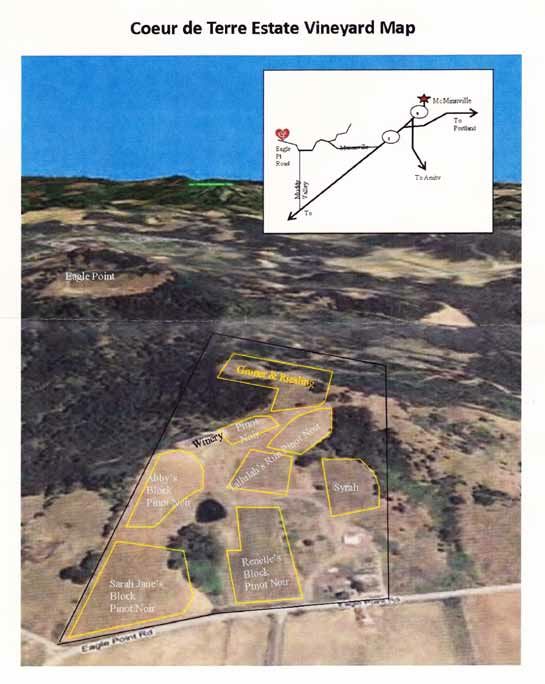 Scott Neal crafts multiple wines out of the 5,500 square foot, gravity flow system winery located mid-slope on the property including Pinot Noir (an Oregon blend, an Estate, and block-designated bottlings), Pinot Gris, Riesling and a Rosé. Pinot Noir winemaking is traditional using small open-top fermenters, manual punch downs, both indigenous and cultured yeast strains for primary fermentation, and commercial malolactic culture in a cool cellar for slow malolactic ferments. The wines are racked directly to French oak barrels with free run kept separate from press fractions and raised 10 to 18 months in French oak barrels (40% new for reserves).
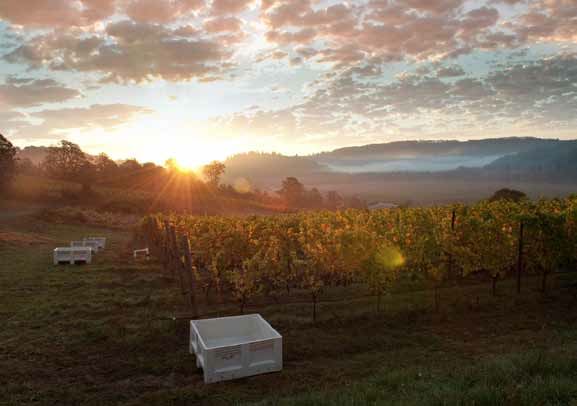 This is a true family run business with the Neals living on the estate, farming the vineyard, and making the wine. They welcome visitors to their tasting room Thursday through Monday from 11:00 to 5:00, with private tours and tasting available by appointment (503-883-4111). The website is www.cdtvineyard.com.
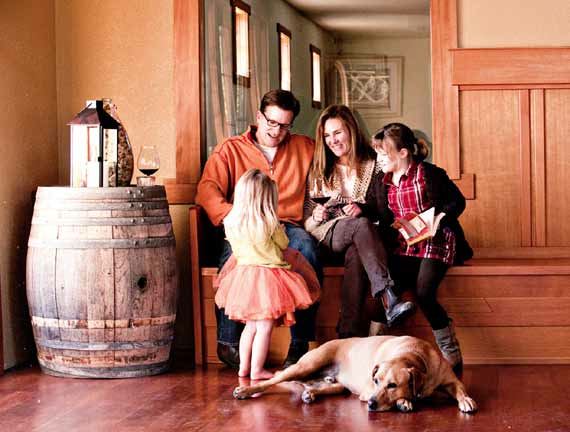 I recently sampled the 2010 Pinot Noir offerings from Coeur de Terre, and was so impressed, I wanted to single out the winery. These are among the most terroir-driven wines in the Willamette Valley. They exhibit a unique savory characteristic that can be attributed to the vineyard and the appellation, and is a feature most evident in cooler vintages like 2010. The vineyard is also unique in its diversity of exposures, elevations and soil types such that the wines that come from each block have character that is both unique to the vintage, but have tones and textures that transcend vintages. Finally, Scott follows a “first do no harm” approach to winemaking and endeavors to intercede minimally on the natural process. This highlights the time and place of the wine in contradistinction to featuring the winemaker’s touch. The following lineup of Pinot Noir wines are extraordinary, especially the reserve, block-designated offerings which will be released in September 2013.
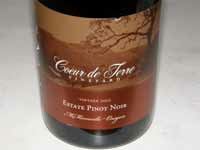 2010 Coeur de Terre Estate McMinnville Willamette Valley Pinot Noir 13.3% alc., pH 3.68, TA 0.59, 275 cases, $36. Old and young vines from the estate vineyard. Aged 14 months in 30% new, 30% once filled, 30% twice filled and 10% neutral French oak barrels. Unfined and unfiltered. · Moderate reddish-purple color in the glass. Very fragrant with alluring aromas of black cherries, ground savory and herbs. Soft and graceful on the palate, with nicely balanced tannins, a good grip of acidity and complimentary quality oak, featuring juicy middleweight flavors of dark red cherries, brown spices, and savory dried herbs. Nicely balanced and highly enjoyable. Very good.
2010 Coeur de Terre Renelle’s Block Estate Grown Reserve McMinnville Willamette Valley Pinot Noir 13.5% alc., 59 cases $58. This 3-acre block was the original planting in the Estate Vineyard circa 1999. It is composed of 8 clones and referred to as the mother block since it supplied the cuttings for all other Pinot Noir vines in the Estate Vineyard. Willakenzie sedimentary soils.This wine is dedicated to Renelle Lynn Neal (Scott’s mother). · Moderate reddish-purple hue in the glass. Effusive aromas of black cherry tart, spice, crusty brioche, and ground savory. Rich and full-flavored, with a layered array of red and purple fruits complimented by a hint of cola and savory herbs. The mouth feel is velvety and the bright acidity brings vibrancy to the wine. The finish goes on and on. A very special wine that will please every Pinot connoisseur.
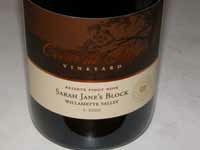 2010 Coeur de Terre Sarah Jane’s Block Estate Grown Reserve McMinnville Willamette Valley Pinot Noir 13.5% alc., $58. From the second block planted in the Estate Vineyard in 2001. 4 acres of 667, 777 and 115 planted in Willakenzie marine sedimentary soil. · Medium reddish-purple color in the glass. Stunning and nearly overwhelming in aromatic intensity featuring a deep perfume of black cherries, blackberries and plum. Delicious core of ornate black stone fruits that make you sit back and take notice. A touch of smoky oak and dried herbs add interest. Impressive fullness and concentration on the palate without being jammy. Seamless with perfect integration of tannins and acidity. A poster child for Oregon Pinot Noir.
2010 Coeur de Terre Abby’s Block Estate Grown Reserve McMinnville Willamette Valley Pinot Noir 13.7% alc., $58. Located mid-slope on the Estate Vineyard. Unique soil type that is transitional between sedimentary and volcanic, uncharacterized but only found in this vineyard. 4 acres planted in 2002 to 667, Pommard and Wädenswil clones. Dedicated to the family’s first daughter, Abigail Parker Neal, born in 2002. · Moderate reddish-purple color in the glass. Dark red stone and berry fruits are featured in this wine which leans heavily on an appealing savory, dried herb riff. Modest in weight with well-honed tannins and juicy acidity, this wine is assertive on attack, through the mid palate and on the generous finish. A pleasure to drink. Very good.
2010 Coeur de Terre Tallulah’s Run Estate Grown Reserve McMinnville Willamette Valley Pinot Noir 13.5% alc., $58. From two blocks that are contiguous planted mid-slope in the Estate Vineyard in 2004 with a massale selection from Renelle’s Block. Dedicated to the family’s second daughter, Tallulah Renelle Neal. · Medium reddish-purple color in the glass. Aromas of raspberries, cherries, tarry oak and cigar box. Soft and polished in the mouth with mid weight flavors of black raspberry, black cherry, brown spice and tarry oak. An interesting wine with some finishing weight and balanced tannins. Good (+).
Kosta Browne Proud of New DigsKosta Browne has a sparkling new state-of-the-art winery in the Barlow complex in downtown Sebastopol. Construction was largely completed in the fall of 2012 allowing the 2011 wines to be bottled there, but 2012 is the first vintage produced entirely within the facility. Kosta Browne becomes the first bonded winery within the city limits of Sebastopol. The former Barlow Apple Factory (the Barlow family started the first commercial applesauce business in the United States before going out of business in 2004) has been reinvented to showcase both production and retail for artisan producers and is the first of its kind in the country. It will allow an environment where a concentrated number of artists, craftspeople, food and wine artisans and consumers can connect and socialize. The 220,000-square-foot Barlow complex will have parks, gardens, an event center, bocce ball courts, children’s play areas and the Sebastopol farmer’s market. The new project is very tastefully designed with buildings constructed with corrugated metal to duplicate in a modern fashion the look of the historic apple processing plant. The remaining corrugated-metal structures on the property were sandblasted to remove old paint. The exterior of Kosta Browne winery is shown below.
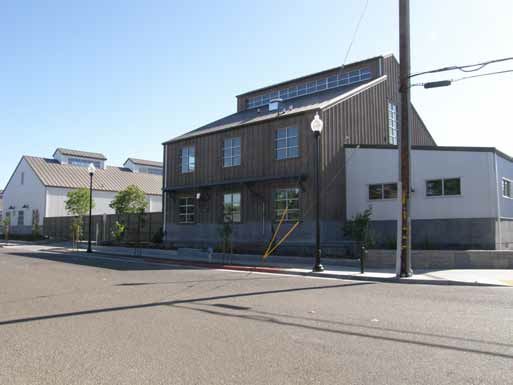 Michael Browne said, “If you had asked Dan Kosta, Chris Costello and me if this day would ever be a reality when we started this brand in 1997, I would have said you are dreaming.” The family of co-founder Chris Costello has had a presence in the Sebastopol area since the 1880s. Dan Kosta grew up in Sonoma County and was immediately drawn to the impact this project had on changing the Sebastopol downtown landscape. I recently met with Tony Lombardi, Kosta Browne’s Public Relations Director, and we took a tour of the new 45,000-square foot winery. There were still workers evident putting on the finishing touches, but the facility is essential complete. Beyond the wine production area are rooms for hosting small dinner events that include a professional kitchen, and a large central inner court complete with a fireplace for larger festivities. These features are especially appealing since Kosta Browne’s previous winery was in a warehouse and never had an appropriate area to receive customers and hold events. In addition, Kosta Browne now has a large room to display their collection of large format bottles which are never sold, and only donated to various charities. A custom programmable sound system controlled by iPhone is evident throughout the facility adding to the ambiance. Kosta Brown produced about 14,000 cases of wine last year, including Pinot Noir and Chardonnay, and plans to increase production about 20 percent during the next five years. The wines are sold exclusively through a mailing list, which now reportedly has 15,000 names on the waiting list. Wines are offered twice a year (spring and fall) and there is a 2-3 year wait for a spring allocation of appellation wines and a 5-6 year wait for a fall allocation of single vineyard designate wines. Grapes are sourced from the Russian River Valley, Sonoma Coast and Santa Lucia Highlands appellations. All appellation wines are $58 and single vineyard designates $78. The new winery does not have a public tasting room and is open only to mailing list members by appointment. Michael does get a gleam in his eye about an unfinished room in the complex which could be a tasting room at some point in the future, but he is more interested in converting it into a “man cave” complete with trophy animal heads and a bar where friends of the winery can hang out. Photos of the winery production area and courtyard entrance follow. As you can see, there is plenty of room.
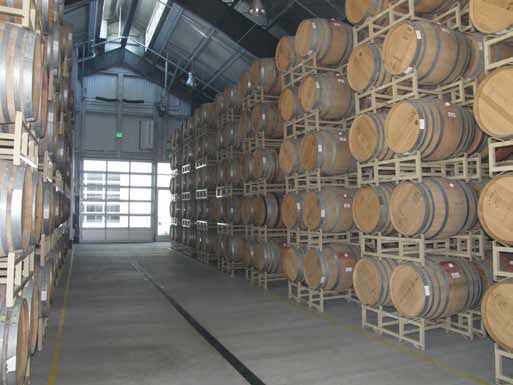
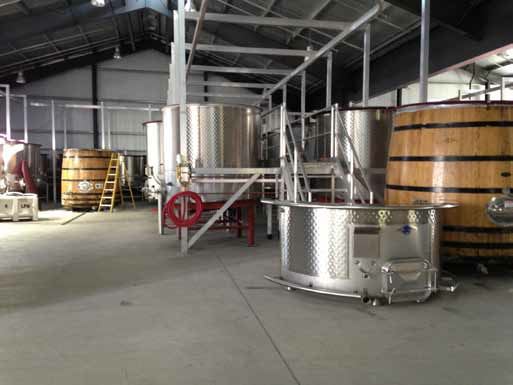
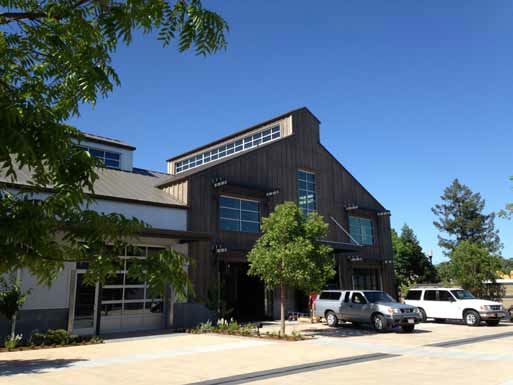 I recently tasted through the 2011 vintage of Kosta Browne wines and the reviews follow. All vineyarddesignate Pinot Noirs receive a 5-day cold soak, 9-11 day fermentation time in 1 and 5-ton open tops and 5-ton wooden open top tanks, 1-2 punch downs per day, with a small amount of whole cluster wine added in. As Kenny Powers would say, “Kosta Browne wines kicked ass in 2011.” The wines are very approachable now with marvelous fruit flavors, yet slightly more modest extraction in this vintage, with reserved tannins and good tension. The vintage allowed for terroir to really express itself in the wines. Significant oak never really comes to mind in these wines. My only nit would be that a sense of heat comes out on the finish of some of the wines as they war in the glass. I asked Michael Browne his thoughts on the 2011 vintage wines. He said the following. “The vintage started a bit rocky with the cold weather and set. Crops were way down from average due to the weather. The growing season was unusually cool although not that dramatic. The vines did not need a great amount of work because of the slow growing season although we were concerned with microbial issues. Without the usual warmth during the maturation season, we had to wait quite a bit longer than usual. What developed was the the grapes ripened well while the sugars were holding so that precise and delicate flavors developed with a good amount of energy, aromatics and flavors. The wines are very elegant, precise and focused. They are more delicate than what we usually produce but they are a detailed imprint from Mother Nature.” Kosta Browne will be participating in the 9th Annual Pinot Family Reunion, June 23, at the Vintner’s Inn Event Center and John Ash & Co. Restaurant in Santa Rosa. The event will benefit the Sutter Bay Women’s Breast Care Center. For information, visit www.vintnersinn.com. Kosta Browne will also be pouring at Pinot Days San Francisco, June 30, at Fort Mason. For details of this event, visit www.pinotdays.com.
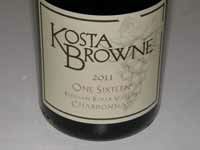 2011 Kosta Browne One Sixteen Russian River Valley Chardonnay 14.5% alc., pH 3.32, TA 0.62, 2,191 cases, $58. Sourced from six vineyards reflecting the Green Valley of the Russian River Valley appellation. Multiple clones. Named for Highway 116 (Gravenstein Highway) that cuts through the town of Sebastopol. Barrel and partially concrete egg fermented 15 months in 40% new French oak barrels. · Moderate golden straw color and clear in the glass. Lovely aromas of honey, lemon curd, golden apple and butter brickle. Very beguiling on the palate with flavors of baked pear, apple, citrus, honey and caramel. Beautifully composed with bright acidity and good staying power on the finish. The best yet from Kosta Browne and a wine that competes with the top performers in the Russian River Valley.
2011 Kosta Browne Russian River Valley Pinot Noir 14.5% alc., pH 3.59, TA 0.57, 4,525 cases, $58. A blend from eleven vineyard sites. Aged 16 months in 48% new French oak barrels. · Moderately dark reddishpurple color in the glass. Aromas of Bing cherry, fruit leather, spice and oak vanillin have staying power in the glass. Full-bodied and rather intensely flavored with tastes of sweet cherry and cola. Soft and velvety in the mouth with reserved tannins. Good (+).
2011 Kosta Browne Sonoma Coast Pinot Noir 14.4% alc., pH 3.59, TA 0.58, 5,004 cases, $58. Sourced from Gap’s Crown, Terra de Promissio and Walala vineyards. Aged 16 months in 49% new French oak barrels. · Medium reddish-purple color in the glass. Earth-bound aromas of forest floor and wild forest berries with a hint of oak. Middleweight flavors are striking in character, featuring strawberries, raspberries and a hint of mocha. Reserved tannins with good acid tension, finishing with a flourish of fresh berry flavor on the finish. I like the restraint and modesty in this wine. Very good.
2011 Kosta Browne Santa Lucia Highlands Pinot Noir 14.5% alc., pH 3.56, TA 0.64, 1,693 cases, $58. Sourced from a blend of five vineyards, Garys’, Pisoni, Rosella’s, Sierra Mar and Soberanes. Aged 16 months in 50% new French oak barrels. · Moderately dark reddish-purple hue in the glass. Shy berry fruit aromas with notes of mushroom, toasty oak and root beer. Mid to full weight dark berry and plum core with an earthy underpinning. Directly fruity rather than complex. Firm tannins keep the fruit in line and the mouth feel is very soft. A bit of heat shows up on the finish. Decent.
2011 Kosta Browne Keefer Ranch Vineyard Russian River Valley Pinot Noir 14.3% alc., pH 3.56, TA 0.59, 900 cases, $78. From a 30-acre vineyard in the Green Valley of Russian River Valley appellation. Farmed by Marcy Keefer and her son Craig Stehlow. Yields 2.4 tons per acre. Clones 115, Pommard, Wädenswil, Mariafeld, 777, 114 and Pommard. 100% de-stemmed. Aged 16 months in 50% new French oak barrels. · Moderate reddish-purple color in the glass. This vineyard always delivers and this vintage is no different. Deep aromas of fresh red cherries and raspberries with a hint of sandalwood. Flavors of wild cherries sprinkled with spice caressed by reserved fine-grain tannins. Vivid and juicy with an assertive and refreshing finish. Very good.
2011 Kosta Browne Koplen Vineyard Russian River Valley Pinot Noir 14.4% alc., pH 3.55, TA 0.60, 658 cases, $78. Vineyard is located in Middle Reach and is planted to Dijon clone 667. Farmed meticulously by Dennis and Lynn Koplen. Kosta Browne is the only producer to ever have access to fruit from this property. Yields 3.0 tons per acre. 12% whole cluster. Aged 16 months in 56% new French oak barrels. · Dark reddishpurple color in the glass. Always a very distinctive wine that is a hedonist’s delight. The aromas of dark berries and cassis with a hint of spice and oak draw you to the glass. The wine attacks the mid palate with a vengeance, seducing you with a blast of voluptuous blackberry and cassis fruit, carrying over to the powerful aromatic finish. Plenty of charm in this vintage. Very good.
2011 Kosta Browne Gap’s Crown Vineyard Sonoma Coast Pinot Noir 14.5% alc., pH 3.57, TA 0.59, 1,678 cases, $78. Vineyard located in the Petaluma Gap and Kosta Browne has a long-term lease of 37 planted acres. The backbone of the Sonoma Coast appellation bottling. Yields 2.8-3.5 tons per acre. Clones 114, 115, 667, “828,” and Swan. 5% whole cluster. Aged 16 months in 52% new French oak barrels. · Moderate reddishpurple color in the glass. Nicely perfumed with hi-tone aromas of red cherries and berries with complimentary spice and oak. Mid weight flavors of red and black raspberries and cherries with balanced dry tannins and a real burst of fruit-driven goodness on the finish. A sophisticated offering with a highly seductive, velvety mouth feel. Very good.
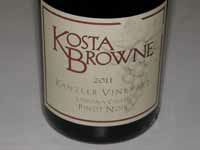 2011 Kosta Browne Kanzler Vineyard Sonoma Coast Pinot Noir 14.7% alc., pH 3.57, TA 0.59, 211 cases, $78. Vineyard is located in the Sebastopol Hills, an area featuring morning and evening fog, breezy afternoons, and bright, mild afternoon sun. Cooler temperatures lead to a longer hang time and this vineyard is usually the last to be harvested. Clones 115, 667 and Pommard. Yields 2.1 tons per acre. 100% destemmed. Aged 16 months in 50% new French oak barrels. · Tighten your seat belt when you open this one. Moderately dark reddish-purple color in the glass. With a nose you could drink, and a core of liquid magic that you can drink, this is one great wine. Aromas of dark red berries sprinkled with vanilla cream lead to sumptuous flavors of black cherries, blue and dark red berries, spice and dark chocolate. Power without weight, juicy without being cloying, this beautifully balanced wine is soft in the mouth and finishes with length and opulence. The pick of the litter.
2011 Kosta Browne Rosella’s Vineyard Santa Lucia Highlands Pinot Noir 14.6% alc., pH 3.54, TA 0.63, 422 cases, $78. From a 50-acre vineyard planted by Gary Franscioni and named for his wife near Garys’ Vineyard. Clones are Pisoni (50%), Pommard 4 (25%) and “828” (25%). Yields 2.1-5.4 tons per acre. 100% de-stemmed. Aged 16 months in 45% new French oak barrels. · Moderately dark reddish-purple color in the glass. The most feminine wine in the lineup, this beauty is silky soft like fine lingerie, offering the sweet Pinot perfume of dark red cherries, berries and baking spice. Modest in weight, but flavorful, with a core of perfectly ripened dark red cherries backed by a whisper of oak spice and toast. A Halle Berry of a wine. Very good (+).
2011 Kosta Browne Garys’ Vineyard Santa Lucia Highlands Pinot Noir 14.6% alc., pH 3.62, TA 0.60, 368 cases, $78. A partnership between Gary Franscioni and Gary Pisoni planted in 1997. 100% Pisoni clone. Average yield 2.7 tons per acre. 8% whole cluster. Aged 16 months in 50% new French oak barrels. · Dark reddish-purple color in the glass. Whereas Rosella’s is decidedly feminine, Garys’ is more macho. Aromatic overload with deep scents of spiced black cherry and plum fruit with a hint of leather and conifer. Delicious, mouthfilling richness, with a bright core of black cherry fruit and a dusting of oak. Very smooth and seamless with tannins so fine as to be imperceptible. A delight to drink because nothing stands out except the luscious fruit. The wine finishes on a high note with remarkable intensity. Oh yah!
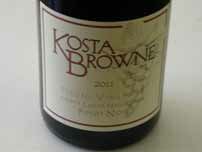 2011 Kosta Browne Pisoni Vineyard Santa Lucia Highlands Pinot Noir 14.3% alc., pH 3.60, TA 0.60, 125 cases, $78. Pisoni Vineyard is 45 acres perched at 1,300 feet overlooking the Salinas Valley to the East. Average yield 2.5 tons per acre. 100% Pisoni clone. 100% destemmed. Aged 16 months in 60% new French oak barrels. · Medium reddish-purple color in the glass. The nose on this wine is stunning and the most fragrant in the 2011 lineup. Fresh, bright, penetrating aromas of cherry tart, raspberry coulis, sandalwood and oak vanillin. Very soft, very flavorful, and very sexy with a plethora of dark red and black cherry and berry fruits in a mid to full-bodied style with a subtle sheen of oak in the background. The tannins are very reserved, allowing the extroverted fruit to shine. This is the most elegant and approachable Pisoni Vineyard Pinot Noir I have ever drank. If Rosella’s is feminine and Garys‘ is masculine, this wine is metrosexual.
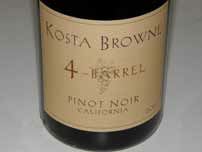 2011 Kosta Browne 4 Barrel California Pinot Noir 14.8% alc., pH 3.51, TA 0.62, 98 cases, $78. Kosta Browne’s smallest lot but requires the most attention to detail. The four barrels are identified from 70 different lots, whittled down to the final four. There are no appellation or vineyard restrictions. 25% Gap’s Crown 667, 25% Koplen 667, 25% Keefer Ranch Pommard 5 and 25% Garys’ Pisoni. Average yield 2.1 tons per acre. 100% de-stemmed. Aged 16 months in 50% new French oak barrels. · Dark reddish-purple color in the glass. Patience is needed with this wine and decanting is recommended if you open now as it is the least approachable wine in the 2011 lineup. Slowly evolving nose, offering aromas of black cherries, black raspberries, and plenty of extroverted spice, reaching a crescendo after 30 minutes in the glass. Like all the 2011 Pinots from Kosta Browne, this wine is very soft in the mouth. Still a bit monotone and closed, the potential is obvious. Layered flavors of black cherry, black raspberry, blackberry and cassis with a dusting of oak and spice. Seamless, with excellent balance and length. This will be one helluva wine in a couple of years.
Sips of California Pinot Noir
2010 Alysian Russian River Valley Selection Russian River Valley Pinot Noir 13.5% alc., pH 3.38, TA 0.685, 2,195 cases, $40. · Moderately light reddish-purple color in the glass. Aromas of Bing cherries, baking spice and briar. Light weight core of cherry and cranberry fruits with a leafy, green side note. Reasonably good mid palate flavor with mild tannins and some finish. Forward drinking and a bit on the under ripe side. Good.
2011 Backhouse California Pinot Noir 12.5% alc., $5.99. Occasionally I need to dip into the bargain bin to see what is offered in this price range. Produced by Cecchetti Wine Co. in St. Helena. · Light reddish-purple color in the glass. Aromas of strawberries, cherries, oak and a pharmaceutical note. Light and simple with decent red cherry and strawberry fruit flavors and very supple tannins. Lacks fire power but won’t disappoint at this meager price point if you just want some quaffable Pinot. One of the better Pinots I have tasted at this price. Decent.
2012 Belle Glos Clark & Telephone Santa Maria Valley Pinot Noir 14.6% alc., $41.50. · Dark reddish-purple color in the glass. Unmistakably Belle Glos with vibrant aromas of dark cherries and berries, spice, balsam, dark chocolate and violets. Bold, almost syrupy, featuring flavors of dark stone and berry fruits, pumpkin pie spice and vanilla. Seductively plush and velvety on the palate with ripe, soft tannins. A richly layered, fruit driven wine that pushes the decadence envelope and who doesn’t enjoy decadence on occasion? Very good.
2010 Bluxome Street Winery Mariah Vineyard Mendocino Ridge Pinot Noir 14.0% alc., 200 cases, $45. · Moderately dark reddish-purple color in the glass. Aromas of forest floor, ripe black cherries, and spicy oak. Vibrant plum, black raspberry and black cherry fruits that are backed by lively acidity. There is a bit of the forest mulch in this wine. Oak is a noticeable adjunct but integrates over time in the glass. The fruit is really stunning and hangs on for dear life on the long finish. Very good.
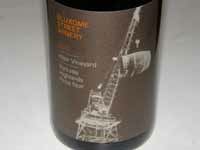 2011 Bluxome Street Winery Weir Vineyard Yorkville Highlands Pinot Noir 14.2% alc., 144 cases, $45. · Medium garnet color in the glass. The nose is quite enjoyable, offering scents of briar, red cherries and violets, but the flavors are remarkable. Red and black cherries, red plums and spice coat the mouth and finish with a peacock tail of glorious note. The finish lasts at least a minute, returning several times for an encore. In addition, the wine is seductively soft and smooth on the palate with a good cut of underlying mineral-driven acidity. The whole package.
2011 Cambria Julia’s Vineyard Santa Maria Valley Pinot Noir 13.5% alc., 34,694 cases, pH 3.59, TA 0.63, $25. Released October 2012. Anchored by one of the oldest commercial plantings of Pinot Noir in Santa Barbara County. (1974). An amalgam of different clones and vine ages. Clones Pomard 4, Wädenswil, 23, 667, 12, Pommard 5 and 777. Aged 8.5 months in 20% new French oak barrels. · Medium reddish-purple color in the glass. Perfume of dark red berry jam, mu shu plum sauce and spice. Lighter in this vintage with delicate flavors of dark red cherries and berries and a hint of spice. Solidly crafted but not exciting, and a bit shallow on the finish. Not up to the level of the past few vintages, but still a good value daily drinker that is widely available. Decent.
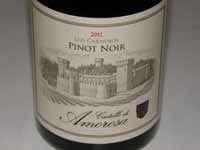 2011 Castello di Amorosa Los Carneros Pinot Noir 14.3% alc., pH 3.71, TA 0.57, 1,319 cases, $36. Aged 10 months in Burgundian oak barrels. Winemakers are Brooks Painter and Peter Velleno. Only sold at the winery or by mail order. · Medium reddish-purple color in the glass. Opens slowly in the glass and needs swirling to shed a bit of reduction and oak. In time, welcoming aromas of black cherries and boysenberries emerge. Very rewarding on the palate with an array of dark berry and stone fruit flavors balanced with ripe, dry tannins and a shadow of oak. Drinks easy and smooth, finishing with hi-tone fruit-filled goodness. Showing a little more oak at this stage than I like, but this was less evident the following day from a previously opened and re-corked bottle so further aging is advised. Very good.
Note: Dario Sattui opened Castello di Amorosa on April 9, 2007. Situated in the hills above Calistoga, the castle-winery was assembled with brick, wood and iron imported from Europe and combined with over 8,000 tons of local Napa Valley stone. The castle-winery is a popular Napa Valley destination and several wine tasting tours and tasting options are offered. Do not let the tourist angle dissuade you from the wines which are top notch.
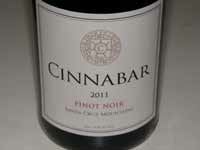 2011 Cinnabar Santa Cruz Mountains Pinot Noir 13.5% alc., pH 3.65, TA 0.61, 125 cases, $42. Family owned winery established in 1981 that sources from diverse California vineyards. This wine is sourced from Saveria Vineyard near the town of Corralitos. Clones 115 and 667. Whole berry fermentation for twelve days, aged 11 months in 40% new French oak barrels. Final blend determined by judicious barrel selection. Lightly filtered. · Moderate reddishpurple color in the glass. The nose opens nicely over time in the glass to reveal aromas of red cherries, raspberries, oak spice, white pepper, vanilla and red rose petals. Simple and direct initially, picking up nuances and intensity over time in the glass. The flavors echo the aromas with an added hint of mushrooms on the grill, herbs and pleasant oak. Mild tannins and easy drink ability now. This is a wine that grows on you over time. Very good.
2012 CrossBarn by Paul Hobbs Sonoma Coast Rosé of Pinot Noir 12.5% alc., $18, screwcap. · Pale apricot color and clear in the glass. Aromas of fresh strawberries, white stone fruits, lychee and fresh brioche. The flavors echo the nose in a delicately flavored style. Light and easy going, with a good cut of acidity. Will work nicely as a chilled aperitif or an accompaniment to sushi. Good.
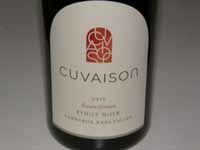 2011 Cuvaison Estate Grown Carneros Pinot Noir 13.5% alc., pH 3.80, TA 0.56, $38. Cuvaison’s flagship Pinot Noir is a blend of wines from 20 distinct blocks in the Cuvaison Estate Vineyard. Average age of vines is 14 years. Each block is vinified separately using open top fermentation, gentle punch downs, basket pressing and French oak aging (11 months in 33% new oak barrels). · Medium reddish-purple color in the glass. Impressive aromatic intensity offering scents of dark red cherries and berries, sandalwood, balsam and baking spices. Velvety smooth and polished on the palate with a delectable array of vivid fruit flavors including raspberry and plum with accents of anise, mushroom and earth and the right touch of oak. Highly typical of its Carneros origins and an impressive achievement in this challenging vintage. Very good.
Note: Cuvaison Estate Wines has introduced a new logo, labels, packaging and wines for its Cuvaison wine brand. The new design is inspired by Cuvaison’s Tasting Room in Carneros, a contemporary space with floor to ceiling windows offering panoramic views of Cuvaison’s sustainably farmed estate vineyard. The new package better reflects the beauty and light of the Tasting Room. Cuvaison will release a Spire Pinot Noir ($45) this spring which is part of the winery’s limited production Single Block Series, wines sourced from select blocks within the Carneros estate that produce the most intense expression of site.
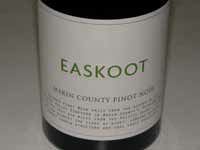 2011 Easkoot Chileno Valley Vineyard Marin County Pinot Noir 13.1% alc., 350 cases, $39. Vineyard is six miles from the Pacific Ocean and bathed in nightly fog. Harvest Brix 22.5º. Clones 777, 115 and unknown. 20% whole cluster. Indgenous fermentation. Aged in 20% new Marcel Cadet French oak barrels. Winemaker Matt Duffy. · Moderate reddish-purple color in the glass. The aromas are a bit different and interesting with notes of candied cherry, blood orange, spice, lilac and vanilla cream. Medium to full-bodied core of black cherry fruit with impressive mid palate attack and finish. Slightly earthy with hints of cola and oak. More body and structure than many Marin County Pinot Noirs, with commendable harmony, finishing slick and clean. Very good.
2011 Easkoot Foggy Bottom Sonoma Coast Pinot Noir 14.3% alc., 250 cases, $28. Sourced from Keller Estate (El Coro Vineyard) in the Petaluma Gap. Clones 667, “828,” and La Tache. Aged in seasoned oak. · Moderately light reddish-purple color in the glass. Fresh uplifting aromas of strawberries, red cherries and sandalwood. Light and elegant, yet flavorful and satisfying, with the vivid taste of red cherry, baking spice, and brewed tea. Beautifully integrated tannins and acidity, offering a relaxed drinking experience. I was taken by the finesse in this wine. An entry level wine that sparkles. Very good, even outstanding at this price point.
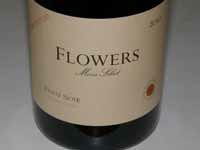 2010 Flowers Moon Select Sonoma Coast Pinot Noir 13.6% alc., $80. 40% Sea View Ridge and 60% Camp Meeting Ridge vineyards. Swan, Calera, 777, “828,” and heritage selections. Yields 1.97 tons per acre. 40% whole cluster. Aged 17 months in 40% new French oak barrels. · Moderately light reddish-purple color in the glass. The nose offers interesting aromas of rose petal and tea leaf from the whole cluster as well as an explosion of black cherry fruit. On lighter side with a good cut of underlying acidity, but quite pleasing to the palate with an array of flavors including dark cherries and plums, boysenberries, spice and edible flower. Nicely balanced tannins and well integrated oak. This wine has great interest from an array of contributing clones and the significant whole cluster. Very good (+).
2011 Fulcrum Gap’s Crown Vineyard Sonoma Coast Pinot Noir 14.2% alc., 200 cases, $58. Clones 667 and 777. Aged 16 months in 37% new French oak barrels. · Medium reddish-purple color in the glass. A little floral, a little tropical, but smelling primarily of sweet Pinot must. Delicate, but satisfying flavors of deep red stone fruits, pomegranates and berries, with bright acidity lifting the fruit’s spirit. Well-seasoned oak shows up in the background. A little shallow upon opening, but tasted the next day from a previously opened and recorked bottle, this wine took on significantly more aromatic and flavor intensity and added a little spice for good measure. Very good.
2011 Fulcrum Brosseau Vineyard Chalone AVA Pinot Noir 14.1% alc., 101 cases, $54. Clones 113, 114 and 115. Aged 16 months in 25% new French oak barrels. · Moderate reddish-purple color in the glass. Aromas of dark red cherries, raspberries, pomegranates, spice and oak. The flavors replicate the nose and have appeal, but lack intensity. Muscular but not aggressive tannins dictate the texture which is typical of this site. A rather elegant fruit expression of this vineyard reflective of the vintage. About the same the following day from a previously opened and re-corked bottle. Good (+).
2011 Fulcrum Wild Cat Mountain Vineyard Carneros Pinot Noir 14.0% alc., 99 cases, $54. Clones 115, 667 and Pommard. Aged 16 months in 25% new French oak barrels. · Aromas of black raspberries, spiced plum, briar and a hint of mint. Mid weight sappy flavors of dark berries and plums. Soft and harmonious with restrained tannins. Pleasant, but wants for mid palate intensity and a notable finish. Good.
2010 Goldeneye Anderson Valley Pinot Noir 14.5% alc., 16,293 cases, pH 3.79, TA 0.53, $55. Released November 2012. Estate fruit blended with fruit from independent growers in the Anderson Valley. 7 vineyards and over 200 individually fermented and aged lots. 90% estate grapes including fruit from all four estate vineyards with the core from Gowan Creek Vineyard. Average sugar at harvest 25º Brix. Aged 16 months in 70% new and 30% second vintage French oak barrels. · Moderately light reddish-purple color in the glass. The nose offers an appealing marriage of cherry fruit and oak. The tasty, sweet cherry core is complimented by a toasty new oak sheen. Firm tannins balance the rich fruit and the finish has welcome length. A little more obvious oak than I prefer, but I can appreciate the style and the fruit is hard to resist. Very good.
2010 Goldeneye Gowan Creek Vineyard Estate Grown Anderson Valley Pinot Noir 15.2% alc., 800 cases, $80. A barrel selection of some of the best lots from the vintage. Only 8% of the grapes from Gowan Creek made it into this wine. · Medium reddish-purple color in the glass. The nose opens slowly in the glass to reveal aromas of black cherries, black raspberries and subtle oak. Delicious black cherry core that is sappy and mouth coating, offering a striking impression on the mid palate and generous finish. The tannins are firm and prominent and oak plays a significant role on the palate. This is a husky wine with very charming fruit crafted in the typical Goldeneye manner. Done well in its style. Very good.
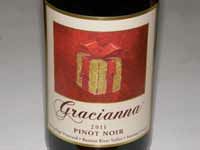 2011 Gracianna Bacigalupi Vineyard Russian River Valley Pinot Noir 14.8% alc., 375 cases, $48. Released April 2013. Harvest Brix 25.6º. Aged 11 months in French oak barrels. Unfined and unfiltered. · Moderately light reddish-purple color in the glass. Plenty to like in this wine with a fiery nose of Bing cherries and oak. Smooth and lacy on the palate with a very tasty core of cherry fruit backed by baking spice and anise-laced oak. Considerably more appealing with more fruit-forward flavor and better integration of oak when tasted the following day from a previously opened and re-corked bottle. Give this wine a little more time in the cellar and it will become the centerpiece of a special meal. Very good.
Note: A new book has been published, Gracianna, written by Ashley Amador’s father and founding partner of Gracianna Winery, Trini Amador III. This novel, inspired by true events, tells the tale of Gracianna Lasaga, Amador’s great grandmother’s journey to America set against the backdrop of Nazi occupied France. I will report more on this book with a full review in an upcoming issue.
2011 Grey Stack Bennett Valley Cuvée Pinot Noir 14.8% alc., 250 cases, $38. Sourced from three vineyards: 50% Dry Stack, 33% Four Brothers, and 17% Steiner. Harvest Brix 23.8º to 24.5º. Aged in 50% new French oak barrels. · Shallow but pleasant aromas of red cherries, spearmint and redwood. Very approachable with the appealing flavor of red cherry pie filling, plum and baking spices. Discreetly concentrated with supple tannins and some aromatic persistence on the finish which leaves a little heat in its wake. Good.
2007 Harmonique Elegancé Anderson Valley Pinot Noir 14.5% alc., pH 3.55, TA 0.65, 247 cases, $36. A blend of fruit from Conzelman, Ferrington, Klindt and Wiley vineyards. Clones are primarily Pommard and Wädenswil. · Moderately light reddish-purple color in the glass. Nicely perfumed with aromas of cherries, baking spice, sandalwood and a new Prada leather coat. Mid weight flavors of cherries and savory herbs. Juicy, with mild tannins and crisp acidity. Seemingly quite fresh albeit six years old. Very good.
2007 Harmonique Delicacé Anderson Valley Pinot Noir 14.4% alc., pH 3.57, TA 0.61, 422 cases, $44. Wädenswil clone from Ferrington Vineyard, 777 from Klindt Vineyard and Pommard from Conzelman Vineyard. · Moderately light reddish-purple color in the glass. Not as aromatic as the Elegancé, but offering a pleasant array of darker red cherry and berry aromas. A step up in intensity with a hearty core of black cherry fruit complimented by a savory, spicy, chocolaty edge. Very soft in the mouth with a noticeably long finish that sports a bright cut of acidity. Very good.
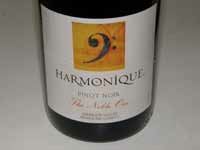 2007 Harmonique The Noble One Anderson Valley Pinot Noir 14.7% alc., pH 3.70, TA 0.59, 434 cases, $39. The core of this wine came from vineyards in the “deep end” of the Anderson Valley including Klindt Vineyard (115, 777 and Pommard) and Wiley Vineyard (115 and Pommard). · Medium reddish-purple color in the glass. Brooding aromas of black cherries, dark berries and briar initially. Over time the nose opens up considerably to a deep black cherry perfume. The biggest (but not big) of the three Harmonique wines with the most tannic backbone, but also the most satisfying. Beautifully balanced with intense dark stone and berry fruit flavors that make an impression on the mid palate, finishing with one of those peacock tail endings that Pinot Noir is famous for. Fresh as a daisy. All the Harmonique Pinot Noirs are well crafted and notable, but this one emotes.
Note: I have tremendous respect for Moira Conzelman who is a tireless promoter of Harmonique wines. She is the public face of the winery and handles all the marketing. Moira is a very sweet, affable women who reflects the spirit of Harmonique wines. I highly recommend them. The winemaker is veteran Robert Klindt for whom I also have great respect. The Conzelmans believe in releasing their wines after they have received significant bottle age. The 2007 vintage was an ideal year for grape growing in the Anderson Valley. 100% de-stemmed, native yeast fermentations. The three wines were aged 12-19 months in 60% new French oak barrels but you never think of oak when you taste these wines. The wines were released in the spring of 2013. Prices are ridiculous considering that one is obtaining essentially a library wine that has been perfectly cellared for a few years.
2011 J. Lohr Fog’s Reach Arroyo Seco Monterey Pinot Noir 14.9% alc., pH 3.67, TA 0.58, 2,824 cases, $35. Crafted entirely from estate grapes and comes from special blocks of J. Lohr’s Arroyo Seco vineyards. High fraction of clone 667, but also 115, 777 and Pommard 4. Yields 1.7 tons per acre. Harvest Brix 25.8º. J. Lohr has a “winery within a winery” to allow production of Pinot Noir in small lots. 100% de-stemmed, cultured yeast fermentation, Malolactic inoculated in stainless steel and completed in French oak barrels. Aged 8 months in 50% new barrels. · Moderately dark reddishpurple color in the glass. Very appealing nose offering scents of black cherries, wild forest berries and dark chocolate. Juicy and lively, with tasty flavors of dark chocolate coated cherries and berries with complimentary oak in the background. A crowd pleaser with nice balance, well-mannered tannins and a mouth filling presence that doesn’t overreach. Very good.
2011 Joseph Phelps Freestone Vineyards Estate Grown Sonoma Coast Pinot Noir 13.5% alc., pH 3.48, TA 0.67, 3,385 cases, $55. 59% Pastorale Vineyard and 41% Quarter Moon Vineyard. Aged 13 months in 40% new and 60% two- to three-year-old French oak barrrels. · Moderately dark reddish-purple color in the glass. Very nicely perfumed with aromas of black cherries, exotic spice and a hint of toasty new oak. Delicious burst of cherry goodness on the palate with an electric cut of acidity in the background. A little spice and a subtle green note are sensed in the background. Silky textured with supple tannins. Not a blockbuster by any means, but impressive for the vintage and wine that whole cluster aficionados will appreciate. Very good.
2011 Longboard Vineyards Russian River Valley Pinot Noir 14.3% alc., $33. 100% de-stemmed, 3-day cold soak, aged on the lees in 30% new French oak barrels until late spring. The wines are racked and blended in the spring and aged another 6 months in barrels before bottling in late fall. · Moderate reddish-purple hue in the glass. The nose unfolds slowly over time in the glass, releasing aromas of dark cherries, raspberries, cranberries and toasty oak. Moderately rich and juicy with very ripe cherry flavor emerging over time accented with mocha and cola, showing a bit of tarry oak in the background. The plentiful tannin and oak needs time to integrate. Tasted the following day from a previously opened and re-corked bottle, the fruit profile veered quite noticeably to the ripe side. Good.
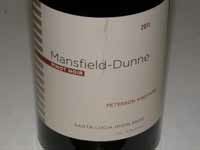 2011 Mansfield-Dunne Peterson Vineyard Santa Lucia Highlands Pinot Noir 14.0% alc., pH 3.72, TA 0.60, 238 cases, $48. Released March 15, 2013. Produced entirely from a family owned estate vineyard. Second vintage. Clones “828,” 667, Pommard 5, 115 and 777. Aged 11 months in 40% new French oak barrels. Winemaker is veteran Ed Kurtzman. · Moderately light reddish-purple hue in the glass. A seductive wine offering bright aromas of fresh strawberries and cherries with a hint of spice and oak. Embraces the mid palate with vivid flavors of cherries, red raspberries, cranberries, nougat and spice. Silky tannins and balanced acidity make for a seamless drinking experience. This wine charms you in many ways. Very good.
2011 Pali Wine Co. “Riviera” Sonoma Coast Pinot Noir 14.3% alc., 7,700 cases, $21, screwcap. Multiple vineyard blend. Aged 10 months in 30% new French oak barrels. · Moderate reddish-purple color in the glass. This is a pleasing drink offering aromas and flavors of black cherries and raspberries and an echo of oak. Easy to drink with lacy tannins, good acidity and a kiss of cherry on the finish. Good (+).
2011 Pali Wine Co. “Bluffs” Russian River Valley Pinot Noir 14.5% alc., 1,100 cases, $22.50, screwcap. Aged 10 months in 30% new French oak barrels. · Moderately dark reddish-purple color in the glass. Very ripe dark red and black cherries with notes of sassafras and balsamic. A big, showy, concentrated wine with the typical Russian River Valley profile of sweet cherries, cola and spice. A good balancing backbone of fine-grain tannins offers substance. Good.
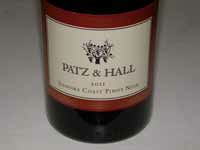 2011 Patz & Hall Sonoma Coast Pinot Noir 14.2% alc., $45. Released September 2012. Sourced frommultiple notable winegrowers including the Duttons, the Martinelli family, Charlie Chenoweth and Steve Hill. The core of fruit comes from Gap’s Crown Vineyard. Wild and cultured yeast fermentation, 100% MLF in barrel. Aged in 50% new French oak barrels. Unfined and unfiltered. · Moderately dark reddish-purple color in the glass. Very fragrant with hi-tone aromas of blueberry jam, wild raspberries, clove, brewed tea and ‘smores. Modest in weight but full flavored featuring tastes of black raspberries, blueberries, plum, tea and spice. Soft in the mouth and easy to cozy up to, this is an impressive appellation wine from a challenging vintage. Very good.
2009 Portalupi Russian River Valley Pinot Noir 14.2% alc., pH 3.47, TA 0.49, $48. Sourced from Rochioli Vineyard. Aged 18 months in French oak barrels. Winemaker Tim Borges. · Moderate reddish-purple color in the glass. Brooding aromas of dark stone fruits with a hint of oak, becoming very ripe in character over time in the glass. Plush core of black cherry fruit and cassis with supportive cola and spice flavors backed by modest tannins, finishing with some intensity and character. The Rochioli Vineyard trait shows up in this wine. Good (+).
2010 Roth Estate Sonoma Coast Pinot Noir 14.4% alc., pH 3.57, TA 0.632, $28. Winner of the 2013 Pigs & Pinot Pinot Cup. · Medium reddish-purple color in the glass. Enjoyable aromas of black cherry, black raspberry and spice cabinet. Light in weight with gentle flavors of dark cherries and berries and a hint of citrus peel on the finish. A little smoky oak plays in the background. The tannins are silky and there is some finishing presence. Smooth, with plenty of finesse, this is a pleasant but not exceptional wine. Good (+).
2009 Viandante Del Cielo Skywalker Ranch Marin County Pinot Noir 14.0% alc., $25. · Medium reddishpurple color in the glass. Awkward and strange on the nose, lacking fruit, and offering aromas of spice cabinet, cigar box and oak. Mid weight core of dark red and black berries with some tobacco-laced oak, modest fine-grain tannins, and bright acidity on the finish. Decent.
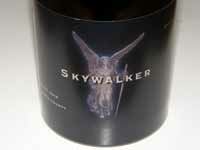 2010 Skywalker Estate Marin County Pinot Noir 14.5% alc. $70. From George Lucas’ Skywalker Ranch in west Marin County farmed by Mark Pasternak. Winemaker Scott McLeod. · Medium reddish-purple color in the glass. Aromas of plum sauce, fresh berries, brewed tea and cut flowers. Impressive richness of flavor featuring discreetly concentrated darker stone fruits and berries, balanced dry tannins, and a pleasant sheen of oak. The most impressive feature of this wine, and always a badge of greatness, is the long finish that returns for several encores. Very good.
2010 Sonnet Tondre’s Grapefield Santa Lucia Highlands Pinot Noir 14.5% alc., $20. · Medium reddish-purple color in the glass. Scents of black cherry glaze, plum reduction sauce, exotic woods and redwood forest. Smooth on the palate with tasty flavors of black cherry, plum and prominent spice reflecting the Hungarian oak elevage. Nicely balanced, easy to drink, with a respectable finish, but doesn’t deliver like the stellar 2009 vintage of this wine. Still, a solid value at this discounted price. 87. Score: 87
2009 Stewart Russian River Valley Pinot Noir 14.5% alc., 402 cases, $50. Sourced from Gibson Vineyard on Ross Station Road. Clone 115. Aged 10 months in 55% new and 45% 1-year-old French oak barrels. Unfined and unfiltered. Consulting winemaker Paul Hobbs. · Moderate reddish-purple color in the glass. Ripe, roasted fruit profile on the nose with aromas of cooked berries and cherry pie glaze. Rich and velvety on the palate, even a little too soft, with an extracted core of sweet, sappy and very ripe fruit flavors including stewed plum and cassis, finishing with generous intensity and a little heat. Decent.
2010 The Ojai Vineyards Bien Nacido Vineyard Santa Maria Valley Pinot Noir 13.8% alc., $29. · Moderate reddish-purple color in the glass. Aromas and flavors of black cherry cola and black raspberry in a mid weight format. Noticeable toasty oak and a green herbal undertone are evident. Surprisingly mundane considering the source. Decent.
 2011 Twomey Anderson Valley Pinot Noir 13.1% alc., pH 3.52, TA 0.56, $46 (Magnums too, $90). Released April 27, 2013. Sourced from the estate Monument Tree Vineyard and Ferrington Vineyard. · Moderately light reddish-purple hue in the glass. Glorious aromas of fresh black raspberry jam, potpourri and spice. I just love that smell. Really delicious marriage of dark berries and cherries with a subtle mocha note. The ripe fruit really pops, reaching every corner of the mouth, and finishing strong and satisfying. There is an appealing tension and focus to this wine and the satiny texture is captivating. An incredible effort in a difficult vintage and my kudos to winemaker Ben Cane. Still great the following day from a previously opened and re-corked bottle when my family polished it off. A 2013 All American.
2011 Twomey Russian River Valley Pinot Noir 13.1% alc., $50 (Magnums too, $100). Middle reach vineyard sources. · Moderately deep reddish-purple color in the glass. Bing cherry, holiday spice and subtle oak all sing in harmony in this terrific wine that does not have quite the bling of the Anderson Valley bottling but it is just as satisfying. The mid palate attack of cherries and cola nearly brings you to your knees and the silky texture is outrageously seductive. Ripe tasting but not over ripe with just the right tension: Russian River Valley Pinot Noir as it should be.
2010 Westerly Sta. Rita Hills Pinot Noir 14.4% alc., 304 cases, $45. Clones 777 and 667. Aged 12 months in a combination of new and 2-year-old French oak barrels. Winemaker Adam Henkel. · Moderately dark reddish-purple color in the glass. Very fragrant with aromas of black cherries, black raspberries and red currants. Vivid cherry core that is well spiced and juicy, discreetly concentrated with balanced tannins and a fruit-driven finish. This is an enjoyable wine that delivers more than the price would suggest, and leaves behind a pleasant impression. Very good.
Sips of Oregon Pinot Noir
2011 A Blooming Hill Vineyard Chehalem Mountains Willamette Valley Pinot Noir 12.7% alc., 360 cases, $20. 100% de-stemmed, 7-10-day cold soak, aged in 30% new French oak barrels. Once racked off the lees, the wine is cold stabilized and left to age. · Moderate reddish-purple color in the glass. Darker raspberry, black cherry and plum fruit aromas and flavors with a subtle accent of tobacco, tar and pungency. Impressive concentration in this vintage. Balanced dry tannins and some finish. Becomes less interesting as a riper fruit profile emerges over time in the glass. Tasted twice. Good.
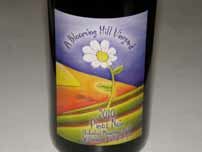 2010 A Blooming Hill Vineyard Chehalem Mountains Willamette Valley Pinot Noir 13.5% alc., 180 cases, $25. 100% de-stemmed, 7-10-day cold soak, aged in 30% new French oak barrels. Once racked off the lees, the wine is cold stabilized and left to age. · Moderately light reddish-purple color in the glass. Medium reddishpurple color in the glass. Nicely perfumed with aromas of ripe strawberries, black cherries and a hint of mocha. Although the vineyard struggled with ripeness, the fruit in this wine is definitely ripe with plenty of satisfying juicy cherry flavor. The wine displays good concentration combined with modest, supportive fine-grain tannins, and a lasting, fruit-laden finish. Very good.
2010 DION Vineyard Chehalem Mountains Willamette Valley Pinot Noir 12.8% alc., $22. · Moderately light reddish-purple color in the glass. Scent of cherries, peat and a whiff of mustard. Tasty core of cherries with an underpinning of earth and herbs. Nicely balanced and easy to drink with soft tannins and lively acidity. Good.
2010 DION Vineyard Winemaker Reserve Chehalem Mountains Willamette Valley Pinot Noir 100 cases, $35. Aged 13 months in 50% new French oak barrels and held in bottle 6 months before release. · Moderately light reddish-purple color in the glass. Shy, but pleasing aromas of strawberry, red cherry and dried Provencal herbs. A wine with modesty and restraint, but good flavor, featuring tastes of red fruits, savory dried herbs and gentle oak spice. Soft and elegant in the mouth with lacy tannins. Good (+).
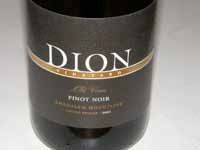 2010 DION Vineyard Limited Release Old Vines Chehalem Mountains Willamette Valley Pinot Noir 13.0% alc., $35. Self-rooted, dry-farmed Pommard clone planted in 1976 in Laurelwood soil at 300 to 500 feet. Aged 13 months in 50% new French oak barrels. · Moderately light reddish-purple color in the glass. This is one of those wines that you know is exceptional from the first sip. The beguiling aromas draw you in with notes of cherries, strawberries, nutmeg and other spices. Smooth, seamless, polished and flat out delicious, this wine sports middleweight flavors of perfectly ripened dark red cherries, raspberries, spice and dark chocolate. Supple tannins and a satisfying cut of acidity in the background. This wine is assertive without weight, showing restraint and modesty, yet delivering a load of pleasure. Quintessential Oregon Pinot Noir.
2011 Luminous Hills Estate Grown Yamhill-Carlton Willamette Valley Pinot Noir 12.5% alc., 322 cases, $35. Yields 1 ton per acre in this cool vintage. Clones are Pommard, 777, 115 and 667 planted on both volcanic and sedimentary soils. · Moderately light reddish-purple color in the glass. Aromas of dark cherries, berries and cassis echoed in the flavors with an underlying tarry note and a tart, citrus-laden cherry finish. Light in weight and easy to drink, this delicately flavored wine will work nicely with food. Good.
2012 Seven of Hearts Willamette Valley Rosé Pinot Noir 13.5% alc., RS 0.14%, 126 cases, $15. Sourced from Luminous Hills, Armstrong and Lia’s vineyards. · Medium pink watermelon in color in the glass. Bright aromas of fresh strawberries, watermelon and peach with a hint of pastry cream. Not a wimpy rosé, but one with a little heft and backbone offering bright flavors of strawberries and cherries and a finish that is crisp and refreshing. The perfect summer BBQ wine. Very good.
2012 Seven of Hearts Chateau Figareaux Columbia Valley Rosé of Cabernet Franc 12.0% alc., 98 cases, $18. A direct press after eight days of skin contact at very cold temperatures. · Moderately light red rose color in the glass. Aromas of red strawberries, blood oranges and rose petals. Light, delicate and demure, with red berry and cherry flavors and a note of green herbs in the background. Juicy, with bright acidity. Decent.
2011 Seven of Hearts Willamette Valley Pinot Noir 12.5% alc., 525 cases, $20. Sourced from five Willamette Valley AVAs. Clones 114, 115, 667, 777, Pommard and Wädenswil. 29% whole cluster. Aged in 25% new French oak barrels. · Light reddish-purple color in the glass. Pleasant array of darker cherry and berry fruit aromas with hints of oak and anise. Very light in weight, but caressing and flavorful, crisp and charming, with tastes of dark red and black berries and an echo of brown spice. Good.
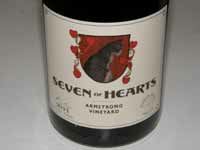 2011 Seven of Hearts Armstrong Vineyard Ribbon Ridge Willamette Valley Pinot Noir 12.5% alc., 175 cases, $35. Willakenzie series sedimentary soils. Clones Pommard and 777. Aged in 29% new French oak barrels. · Light ruby color in the glass. Delicate aromas of black cherries and dark red roses. Demure on the palate with plenty of finesse, featuring flavors of black cherries cloaked in fine-grain tannins, finishing with a pleasing, long kiss of cherries. Not a blockbuster, but a reflection of the vintage, well-crafted and thoroughly satisfying. Very good.
2011 Seven of Hearts Lia’s Vineyard Chehalem Mountains Willamette Valley Pinot Noir 12.5% alc., 126 cases, $35. Jory volcanic soils, Clones are Pommard, Wädenswil, Mariafeld and 115. Aged in 20% new French oak barrels. · Light reddish-purple color in the glass. Dark red cherries and berries are featured in this wine which has a tasty core of delicate fruit and some intensity on the finish, but the tannins are mildly imposing and there is a subtle green undertone of unripeness. Decent.
2010 Tyee Wine Cellars Estate Willamette Valley Pinot Noir 13.5% alc., 400 cases, $24.99. A blend from all plantings in the Estate Vineyard from vines 10 to 36 years old. · Moderately light reddish-purple color in the glass. Aromas of fresh red fruits, melon and a hint of wasabi. Good mid palate intensity of red cherry, raspberry, pomegranate and spice flavors finishing with refreshing acidity, and a rush of tannins on the finish. Good.
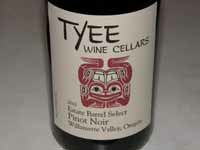 2010 Tyee Wine Cellars Estate Barrel Select Willamette Valley Pinot Noir 13.5% alc., 100 cases, $34.99. Winemaker’s selection of favorite barrels of vintage. · Moderately light reddish-purple color in the glass. Dreamy aromas of dark red raspberries and cherry pie glaze. Delicious array of red and black cherry and berry fruits exhibiting noticeable presence without pronounced body. Bright, clean and juicy with firm, balanced tannins that keep the fruit in line, ending with good tension on the acid-driven finish. The wine becomes silkier and livelier with air. Very good (+).
Sips of California Chardonnay & A Few Other Whites
2010 Alysian Russian River Valley Selection Russian River Valley Chardonnay 14.2% alc., pH 3.30, TA 0.73, 607 cases, $36. · Light straw color and clear in the glass. Very shy aromas of lemon curd with the slightest hint of oak. Flavors of lemon and grapefruit with complimentary oak in the background. Lacks depth and complexity but straightforward and easy to drink. Good.
2010 Alysian Floodgate Vineyard Clone 95 Russian River Valley Chardonnay 14.1% alc.,pH 3.35, TA 0.7, 239 cases, $40. · Enticing aromas of lemon pie, green apple and baking spice. Appealing richness and body with a full-flavored core of apple, citrus, caramel and vanilla flavors. Very smooth on the palate with slight dry tannins and a dry, uplifting finish. Very good.
2012 Alysian Floodgate Vineyard North Face Russian River Valley Sauvignon Blanc 14.0% alc., pH 3.10, TA 0.735, 317 cases, $20. · Very pale gold color with a slight green tinge. Typical grassy nose with hints of tropical fruit including papaya and banana. Less grassy on the palate with a slightly creamy mouthfeel, good acidity and a dry finish. Light on its feet, and slipping off the back end gracefully, the wine offers flavors of hay, dried herbs and tropical fruits. Sauvignon Blanc is not my favored cup of tea but this is a stellar example of a food-friendly type. Good (+)
2012 Castello di Amorosa Mendocino County Pinot Grigio 14.5% alc., pH 3.31, TA 0.59, 3,094 cases, $21. Crafted in the Italian style. Stainless steel tank aged. · Faint yellow color and clear in the glass. Aromas of tropical fruits including papaya and passion fruit, green apple and lemon. Has some substance with satisfying flavors of apple, tropical fruits, and cut grass. The mouthfeel is slightly creamy and the bright acidity lifts the finish. A pleasurable wine perfect for summer picnics and tailgate parties. Good (+).
2012 CrossBarn by Paul Hobbs Sonoma Coast Chardonnay 14.1% alc., $18, screwcap. 80% fermented in tank, 20% in neutral French oak barrels. Native and selected yeasts. 100% MLF. · Pale straw yellow color and clear in the glass. Aromas of buttered brioche, lemon curd, and honey. Slightly creamy and buttery, featuring flavors of lemon, white peach, honey and baked apple. Full-flavored and showy with a little heat peaking out on the finish. Good.
2010 Gary Farrell Westside Farms Russian River Valley Chardonnay 14.2% alc., pH 3.29, TA 0.74, 372 cases, $38. From a 40-acre vineyard a short distance from the winery farmed by Ron and Pam Kaiser. Clone 4 planted in 1989. Whole cluster pressed, 100% barrel fermented, aged 7 months in 40% new French oak barrels. · Light golden straw color in the glass. Demure aromas of citrus peel, tropical fruits and vanilla with a subtle steely tone. Juicy with delicate flavors of lemon, lime, white peach, brown butter and a hint of smoky oak. Rather reserved, but pleasant. Good.
2010 Gary Farrell Rochioli-Allen Vineyards Russian River Valley Chardonnay 14.1% alc., pH 3.35, TA 0.66, 298 cases, $45. Sourced from Rochioli and Allen vineyards. 100% barrel fermented for 7 months in 40% new Francois Frères oak barrels. · Light golden straw color and clear in the glass. Aromas of buttery brioche, lemon, pear and smoky oak. Restrained and reserved, offering flavors of citrus, honeyed caramel and the slightest oak, and a slightly creamy texture. A solid, slightly austere wine that was more striking when reviewed three months ago. Good.
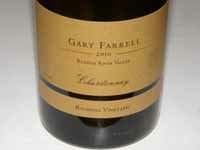 2010 Gary Farrell Rochioli Vineyard Russian River Valley Chardonnay 14.1% alc., pH 3.27, TA 0.65, 288 cases, $45. Released November 2012. Gently whole cluster pressed, 100% barrel fermented for 7 months in 40% new Francois Frères oak barrels. · Light golden straw color and clear in the glass. Clean citrus and apple aromas accented with faint buttery oak and petrichor. Flavors of grilled peach, lemon and nougat, with an intensity that persists long after the wine is swallowed. Soft in the mouth and relatively reserved, but very polished and high-collared, and appropriately fueled by steely acidity. The finishing presence is what makes this a wine apart. Very good.
2011 Hirsch Vineyards Estate Sonoma Coast Chardonnay 13.5% alc., pH 3.35, 506 cases, $55. · Golden straw color and clear in the glass. Very appealing aromas of crème brûlée, white peach, lemon drop and brioche. Very clean and polished, with flavors of white stone fruits, apple and citrus, sporting a pleasing touch of oak, and showing some aromatic intensity on the somewhat lengthy finish. Very good.
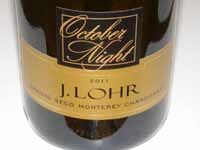 2011 J. Lohr October Night Arroyo Seco Monterey Chardonnay 14.9% alc., pH 3.58, TA 0.66, 1,693 cases, $25. 60% Dijon 809 (Musqué clone) blended with clone 76. 100% barrel fermented in 45% new Francois Frères French oak barrels using native yeast and aged sur lie for 12 months. · Pale golden yellow color and clear in the glass. A sophisticated offering with aromas of lemon drop, grilled peach, honeysuckle and chalk-laden soil. Plenty of fruit flavor including lemon, persimmon and white peach. The most striking feature of this wine is its oakdriven baking spice aroma and flavor. Soft, light, graceful and easy to like, the alcohol presents no notice. A terrific value considering the care and expense taken in its vinification. Very good.
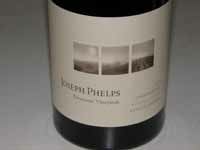 2011 Joseph Phelps Freestone Vineyards Estate Grown Sonoma Coast Chardonnay 13.5% alc.,pH 3.31, TA 0.70, 2,150 cases, $55. 100% MLF. Aged 13 months in 40% new and 60% two to three-year-old French oak puncheons and barrels. · Light golden straw color and clear in the glass. A very embraceable wine with hi-spirited aromas of spiced apple, lemon, creme brulee and vanilla cream, and sparkling flavors of lemon curd, green apple and a hint of pear. Oak is understated but supportive. Very juicy with lively acidity and a chalky, mineral blessed finish.
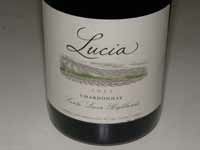 2011 Lucia Santa Lucia Highlands Chardonnay 14.2% alc., $39. From the Pisoni family who are better known for Pinot Noir but their Chardonnays are first rate. Year in and year out, one of my favorite California Chardonnays (and well-priced too). · Light straw color and clear in the glass. A perfect blend of fruit and oak-driven aromas and flavors featuring citrus, pear, crème brûlée, honey and caramel. Nothing stands out and the wine is in perfect focus, indicating impeccable winemaking. No quarter given to the French.
2011 Patz & Hall Sonoma Coast Chardonnay 14.2% alc., $45. Released March 2013. The core is from Gap’s Crown Vineyard with added grapes grown by the Martinellis, the Duttons, and Charlie Chenoweth. Essentially, this is a blend of vineyard-designate quality sites including Zio Tony, Parmalee Hill, Sun Chase, Durell Vineyard and Dutton Ranch.Yields were down by almost 30% in 2011. Whole cluster pressed, indigenous yeast fermentation, aged sur lie with weekly stirring aged in 40% new French oak barrels. · Light golden straw color and clear in the glass. Inviting aromas of lemon cream, honey, malted milk and Asian pear. Good richness of flavor featuring honey, baked apple, lemon and burnt caramel notes with some oak showing up on the finish. Soft in the mouth and friendly, this is a solid appellation wine. Good (+).
2011 Patz & Hall Dutton Ranch Russian River Valley Chardonnay $42. Released March 2013. Produced from some of the oldest plantings of Chardonnay in western Sonoma County, predominantly a blend of California heritage clones and selections including Robert Young, Rued, Hyde-Wente, UCD 4, and Spring Mountain. Mostly dry-farmed. Whole cluster pressed, 100% indigenous yeast, aged sur lie with weekly stirring, 100% MLF in barrel and aged in 35% new French oak barrel. · Medium golden straw color and clear in the glass. Aromas of buttered brioche, citrus, honeycomb and a hint of oak. Tasty and harmonious, with flavors of baked apple, honey and tropical fruits, finish with character and admirable intensity. A thoroughly pleasing Chardonnay that is beautifully composed. Very good.
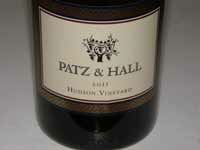 2011 Patz & Hall Hudson Vineyard Carneros Napa Valley Chardonnay 13.7% alc., 279 cases, $55. Released March 2013. Sourced from the 4-acre prized block that Hudson makes his own Chardonnay from. Planted in 1980, this block featurs Hudson-Wente selection isolated by Lee Hudson. Whole cluster pressed, indigenous yeast fermentation, sur lie aged with weekly stirring, aged in 55% new French oak barrels. Unfiltered. · Light golden straw color and very slight haze (unfiltered) in the glass. A serious wine offering aromas of lemon, caramel, buttered popcorn and chalk dust. Elicits a Wow! on the palate with luscious flavors of lemon, baked pear, peach honey, toffee, and pastry creme. Ideal integration of oak, notable acidity and impeccable balance. One of California’s greatest and most sophisticated Chardonnays.
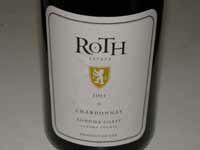 2011 Roth Estate Sonoma Coast Chardonnay 13.7% alc., pH 3.61, TA 0.78, $28. A blend of Sonoma Coast and Russian River Valley fruit. Aged sur lie 11 months in 100% French oak barrels. · Very light yellow and clear in the glass. Inviting array of tropical aromas including pineapple with hints of white peach and oak vanillin. Very enjoyable flavors of baked apple, grilled pineapple, lemon, lychee and slight burnt caramel finishing smoothly on a lemon drop note. Beautifully composed, throughly dry and refreshing.
Pinot BriefsWineries of Santa Barbara County Touring Guide The Santa Barbara County Vintner’s Associaton has announced a free guide to touring the wineries of Santa Barbara County. A print version (free copy mailed to you), a digital version, and a free smartphone app are available. Visit www.sbcountywines.com.
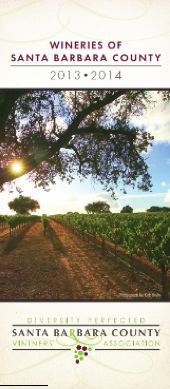 First Anderson Valley Barrel Tasting Event The Anderson Valley Winegrowers Association will host the first Anderson Valley Barrel Tasting Weekend on July 27 and 28. The event will be held at various wineries throughout Anderson Valley and attendees will get unprecedented access to winery cellars and the opportunity to taste yet-to-be-released wines as well as purchase futures of their favorites. Many wineries will offer special discounts. Tickets are $20 and include a logo glass and access to both Saturday and Sunday events. Sober driver tickets are complimentary. For information and tickets, visit www.avwines.com.
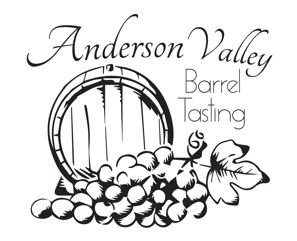 Reader Relates Historic Pinot Noir Tasting Dennis Sienko sent me this marvelous story. He attended a tasting of Pinot Noir with Andre Tchelistcheff twenty or more years ago at Drager’s Market in Menlo Park. In addition to Tchelistcheff and his wife, six winemakers whose wines were poured were seated with him at a head table. There were about 30 in attendance facing the head table. Everyone tasted through the six wines and Tchelistcheff gave his thoughts on the wines. He started with the wine he liked the least, a Pinot Noir from Saintsbury. The winemaker squirmed noticeably as Tchelistcheff ripped this wine apart. Sienko doesn’t remember the other wines, but he remembers a descriptor he used to describe the aroma of the wine he rated first. He said that the wine smelled like “the inside of a woman’s glove.” Everyone in the audience snickered at the commend. He had a reputation of being a ladies man, so the comment fit the context. Later, when everyone was trying to get an autograph or to speak with him, he rebuffed most people. Sienko got a couple of the ladies in his group to flash a “come hither” smile to him, and he immediately scooted over to our group for conversation and autographs. New Dating Site for Wine Lovers VineaLove, an international dating and networking site for wine lovers, was launched recently at Vinexpo in Bordeaux, France. Currently free during the launching period the site will transition into a paid networking site (about $20 for membership). Five language editions are available online (English, French, Japanese, Italian and Turkish). How Alcohol Consumption Affects Health A report from Australia was published in Alcohol Clin Exp Res recently titled, “Metabolic and biochemical effects of low-to-moderate alcohol consumption. The key findings of this study were a linear increase in HDL cholesterol and a linear decrease in insulin levels with increasing amounts of alcohol. For most other factors such as liver enzymes, triglycerides, blood glucose and CRP, there was a J-shaped relation with lower values with light drinking and higher values with large amounts of alcohol. The International Scientific Forum on Alcohol Research agreed with the conclusion of the authors and overall consider the study provides strong support for the results of most prospective epidemiologic studies that show lower rates of cardiovascular and other diseases among light-to-moderate drinkers than among abstainers or heavy drinkers. Trivia Fight Wine Game This game can be played on the iPhone and soon on Facebook. This game comprises more than 30,000 fun and interesting questions. The app and questions are free to the readers of the PinotFile: Install Trivia Fight on your iPhone with this link - http://goo.glULzjg, open Trivia Fight and connect via Facebook or create a profile, press “start a new game” to complete in the General Knowledge category. Go to “More questions” to quiz in the wine mini-category, scroll down and select wine, and challenge your friends. Visit www.triviafight.com. New Cork Closure A twistable and re-sealable wine cork that does away with the corkscrew may revolutionize wine bottle closure. The Helix cork and bottle has a thread finish that allows the consumer to twist the stopper open and closed again. Unveiled at Vinexpo in Bordeaux, it should be available within two years. It represents a four year collaboration between Amorim and a United States bottle maker. The design uses agglomerated cork.
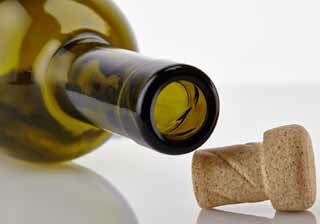 New Fort Ross-Seaview Winegrowers Association This AVA, a sub-AVA of the large Sonoma Coast approved in 2011, has formed a winegrowers association under the leadership of Daniel Schoenfeld, the owner of Wild Hog Vineyard in Cazadero. The 555 acres of vines includes several growers, but very few wineries. Wines & Vines Direct to Consumer Wine Shipping Report This annual report by ShipCompliant and Wines & Vines was supplied to readers of the magazine. A few statistics stand out. the volume of wine shipped from wineries increased 7.7% in 2012 over 2011 to 3.18 million 9-liter cases. that was an 18% increase over 2010. The value of these shipments was $1.46 billion, a 24% increase over 2010. Direct sales have surpassed wine exported from the United States. Cabernet Sauvignon, Pinot Noir and Red Blends account for almost 52% of the volume of wines shipped. Pinot Noir shipments from Sonoma County skyrocketed in 2012. Among all varietals shipped, Rosé, Sparkling Wines and Pinot Noir saw the greatest increases in volume and value of shipments over 2011 (25% increase in volume and32% increase in value in 2012). 60% of all wines shipped from Oregon to consumers is Pinot Noir and no region is more dominated by a single varietal than OregonCalifornia is the top destination for wine shipments. New Vineyards Sprouting Like Weeds in Sonoma County According to The Press Democrat (June 2, 2013), there has been a plethora of applications to plant new vineyards and replace older vines in Sonoma County. Currently, there are nearly 59,000 acres of vineyards in Sonoma County, and over the past two and a half years, growers have filed applications to plant nearly 1,500 acres of new vineyards and replant more than 2,300 acres of existing vineyards. The vast majority of applications have been approved. More than one-third of new vineyard acreage proposed in Sonoma County since the beginning of 2012 has been by Jackson Family Wines. There is a cluster of new vineyards proposed along Highway 116 from Sebastopol to Forestville. Planting has been somewhat constrained by the availability of vines which are limited in part by the red blotch virus found in some nursery rootstock and vines. Trends in Closure Usage According to Wine Business Monthly (June 2013), 84% of wineries use natural corks for all, or part of, their wines. The number of wineries using at least some screw caps has increased from 5% in 2004 to 38% in 2013. The number of wineries using technical corks has stayed about 30% since 2006. Belle Glos Adds Fourth Vineyard-Designated Pinot Noir The inaugural Dairyman Vineyard Russian River Valley Pinot Noir was released from the 2011 vintage ($44). Once an old dairy farm, the pastureland was planted to Dijon clones 116, 667 and 777 on 101-14 in 1989. Belle Glos has sourced grapes from this vineyard since 2003 and purchased the property in early 2013. The vineyard sits in the southern alluvial plains of the Russian River Valley. KiplingerTouts Oregon Wine Country Over Napa Valley In a June 6 article, Kiplinger wrote, “Cheap Vacation Alternatives to Popular Places.” Oregon wine country was singled out as lodging is often inexpensive, only one in four wineries charge a tasting fee and even when there is a charge, a wine tasting at an Oregon winery averages just $8 compared with $20 in the Napa Valley. One important advantage not mentioned is that Oregon wine country is relatively crowd free most days with no limos hogging the roads. It is also much more unpretentious. Top Central Coast Winery Picnic Spots The Wandering Wino Blog offered a summary and photos of the best winery picnic spots at a number of wineries at www.wandering-wino.com. The top picks included Gainey Vineyards, Rusack, Cambria, Lincourt, Zaca Mesa, Foley, Alma Rosa, Bridlewood, Roblar, Laetitia, Talley, Wolff Vineyards, and Chamisal. Willamette Valley Vineyards New Additions A new barrel cellar for Pinot Noir and a new tasting room above is currently being constructed. The new space will have a wine and food pairings bar where the winery chef, Eric Nelson, will teach and entertain. It will also feature a Club Room for members and tiered decks overlooking the Willamette Valley. Also, a Wine Country Cruise-In will be held July 14. Wine, BBQ, and live music. Prizes for Best Classic Car, Best Hot Rod, Hottest Paint Job and Best in Show. Visit www.wvv.com. Presqu’ile Opens Santa Maria Winery & Tasting Room The show piece of the Santa Maria Valley will be open to the public beginning Thursday, June 20, seven days a week from 10:00 to 5:00. The facility has been under construction for over three years. No appointment necessary for tastings, reservations needed for a tour of the wine caves and four level gravity flow winery. The winery is at 5391 Presquile Drive, Santa Maria.
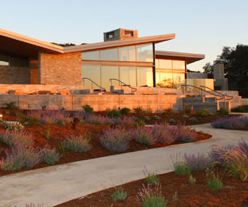
Summer Wine Reading
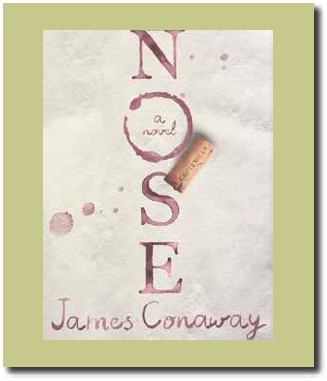 There are many new releases about wine that beckon you to hunker down with a good bottle of Pinot Noir and read about your wine passion. Nose: A Novel James Conaway, Thomas Dunne Books, 336 pp, hardcover. Although this novel centers around the evil weed, Cabernet Sauvignon, and that other wine region east of Sonoma County, it is a wellreviewed mystery that is fast paced and written by someone who knows wine (Conaway also wrote Napa: The Story of an American Eden). Gracianna Trini Amador, Greenleaf Book Group Press, 277 pp, softcover (July 2013 release). Novelist and founding partner with his wife and children of Gracianna Winery in the Russian River Valley, Trini Amador, writes a novel inspired by true events about his great-grandmother, Gracianna Lasaga, and her journey to American set against the backdrop of Nazi occupied France. This is the story behind the Gracianna label, the French Basque woman whose legacy is kept alive through Gracianna wine. Into Wine: An Invitation to Pleasure Olivier Magny, Gourmand Horizons, 220 pp, softcover. Magny is the founder of France’s top wine school. This is a book of learning and inspiration, humorous and engaging, teaching the reader about wine and many things that you never knew were connected. The Road to Burgundy: The Unlikely Story of an American Making Wine and A New Life in France Ray Walker, Gotham, 320 pp, hardcover (July 2013 Release). I can say I knew Ray Walker before he quite his job and moved to Burgundy to start a winery despite having little money, very little command of the French language, and virtually no winemaking experience. This is a glorious tail of someone determined to find their true path in life. Still more reads: The New Wine Country Cookbook: Recipes from California’s Central Coast; Inventing Wine: A New History of One of the World’s Most Ancient Pleasures; Summer in Napa: A St. Helena Vineyard Novel; Must. Have. Wine. A Toast to Motherhood; Monty Waldin’s Best Biodynamic Wines; Taste Buds and Molecules: The Art and Science of Food, Wine and Flavor; Questions of Taste; The Wine Forger’s Handbook; and American Wine: The Ultimate Companion to the Wines and Wineries of the United States; Divine vintage: Following the Wine Trail from Genesis to the Modern Age; Celebrity Vineyards: From Napa to Tuscany in Search of Great Wine; The Juice: Vinous Veritas; The Barefoot Spirit: How Harship, Hustle, and Heart Built America's #1 Wine Brand. |